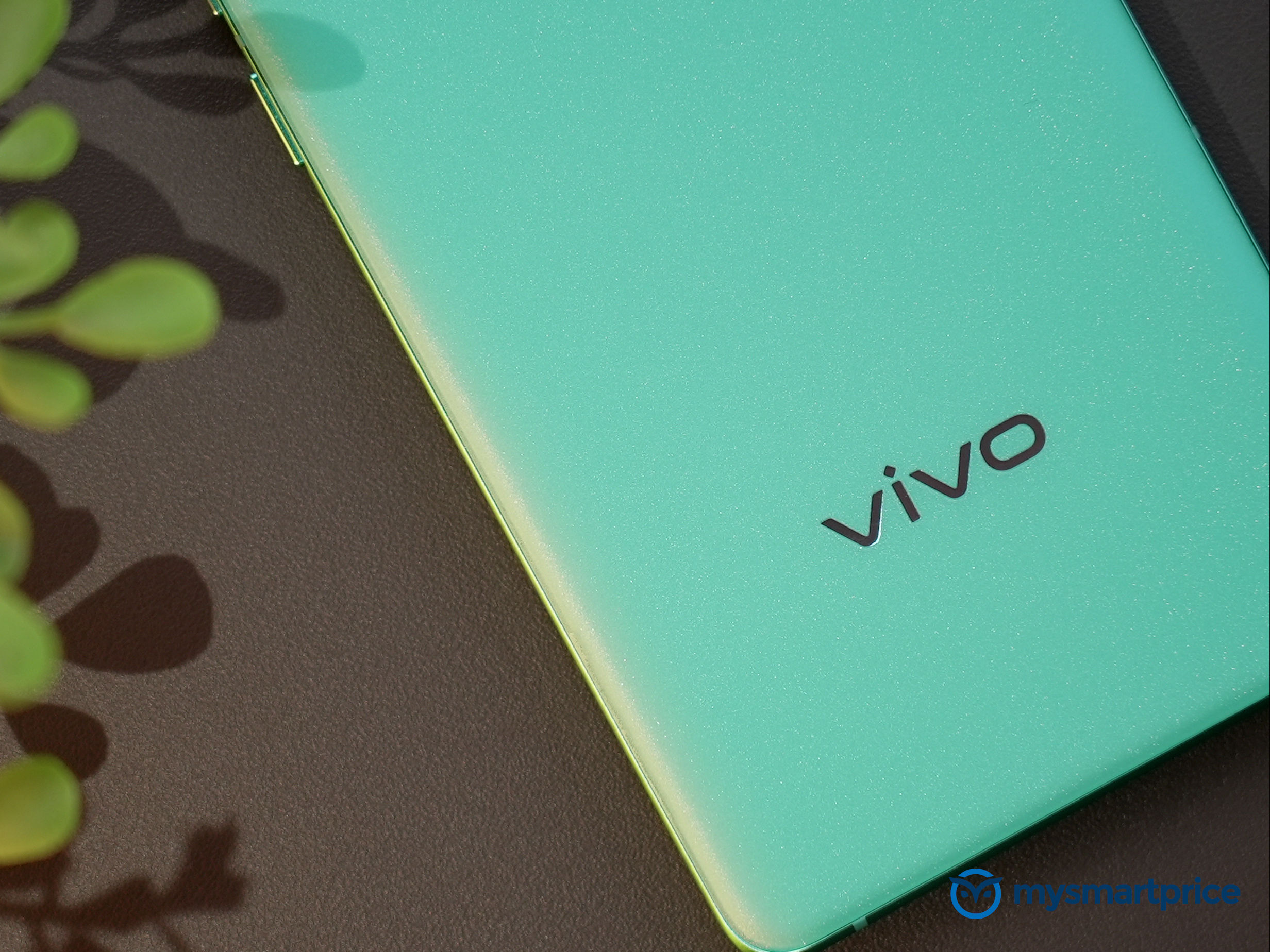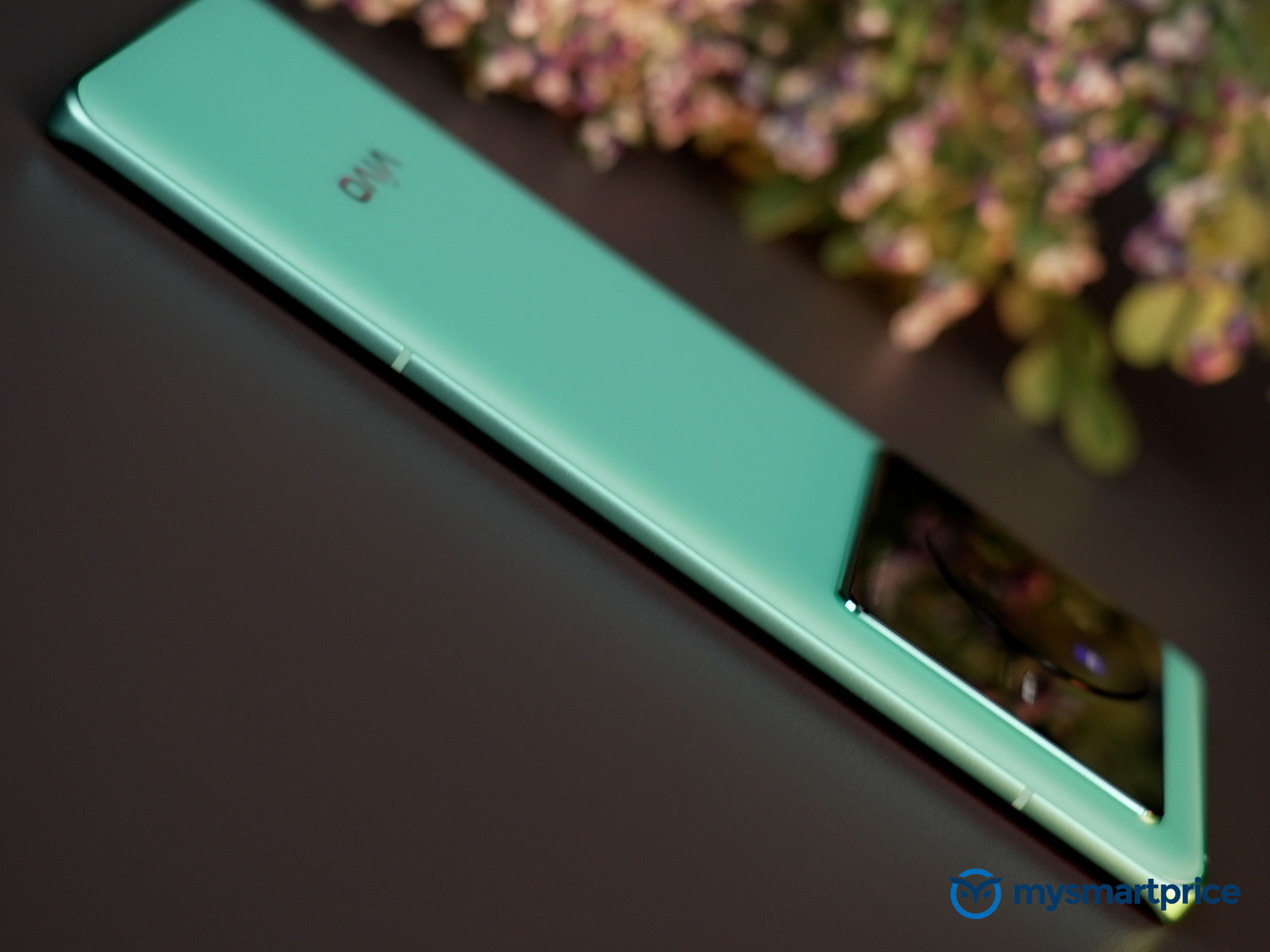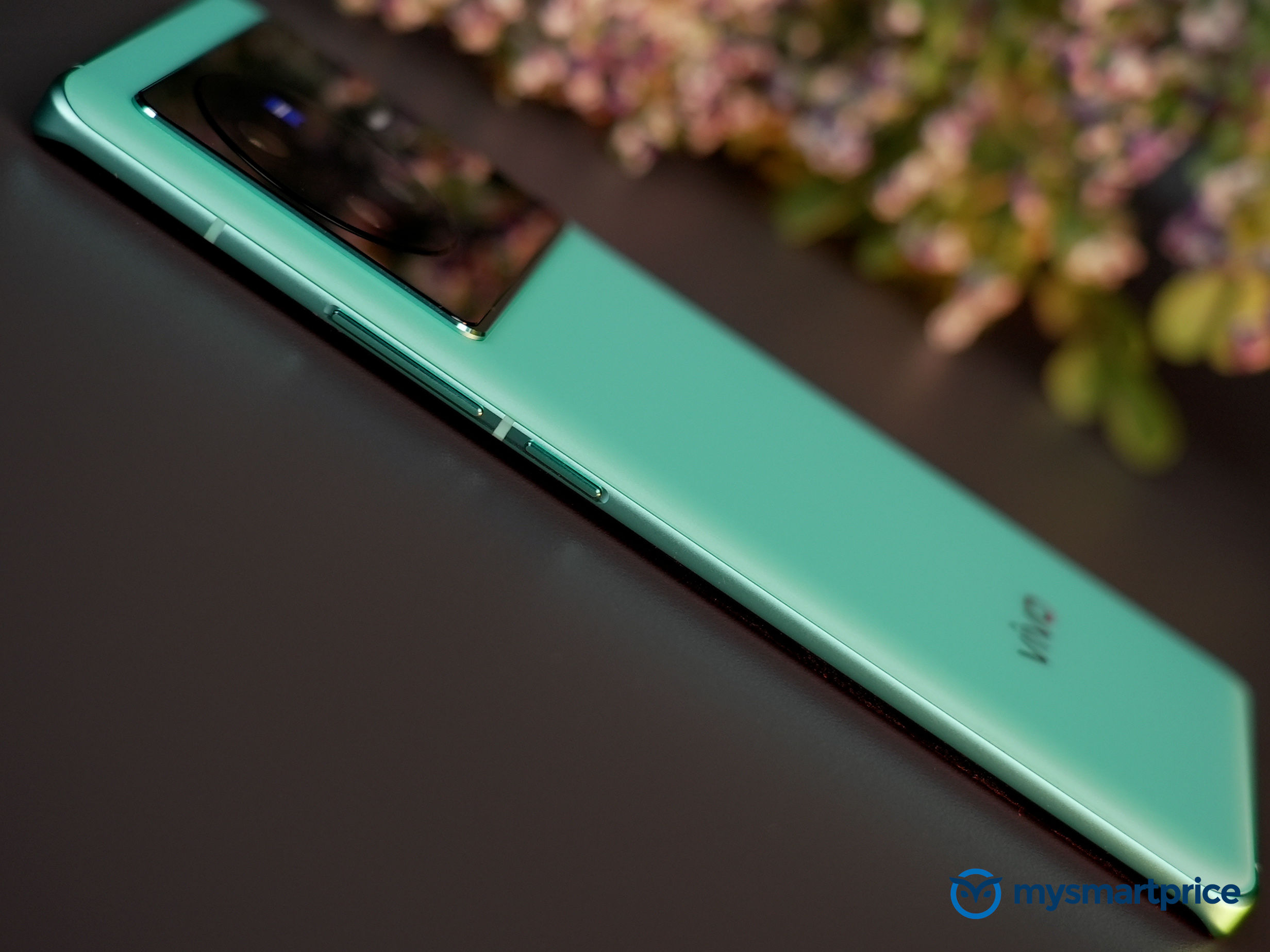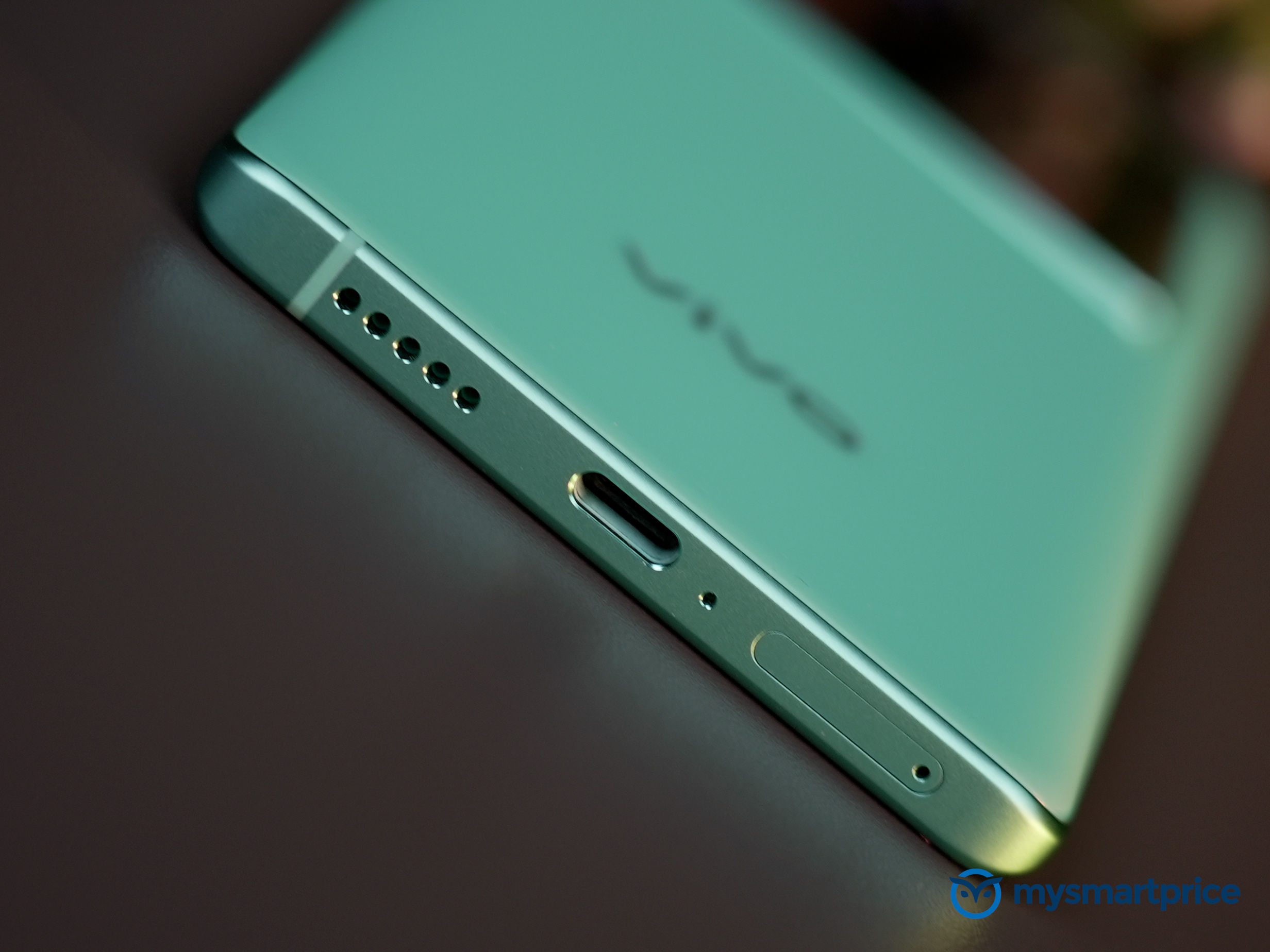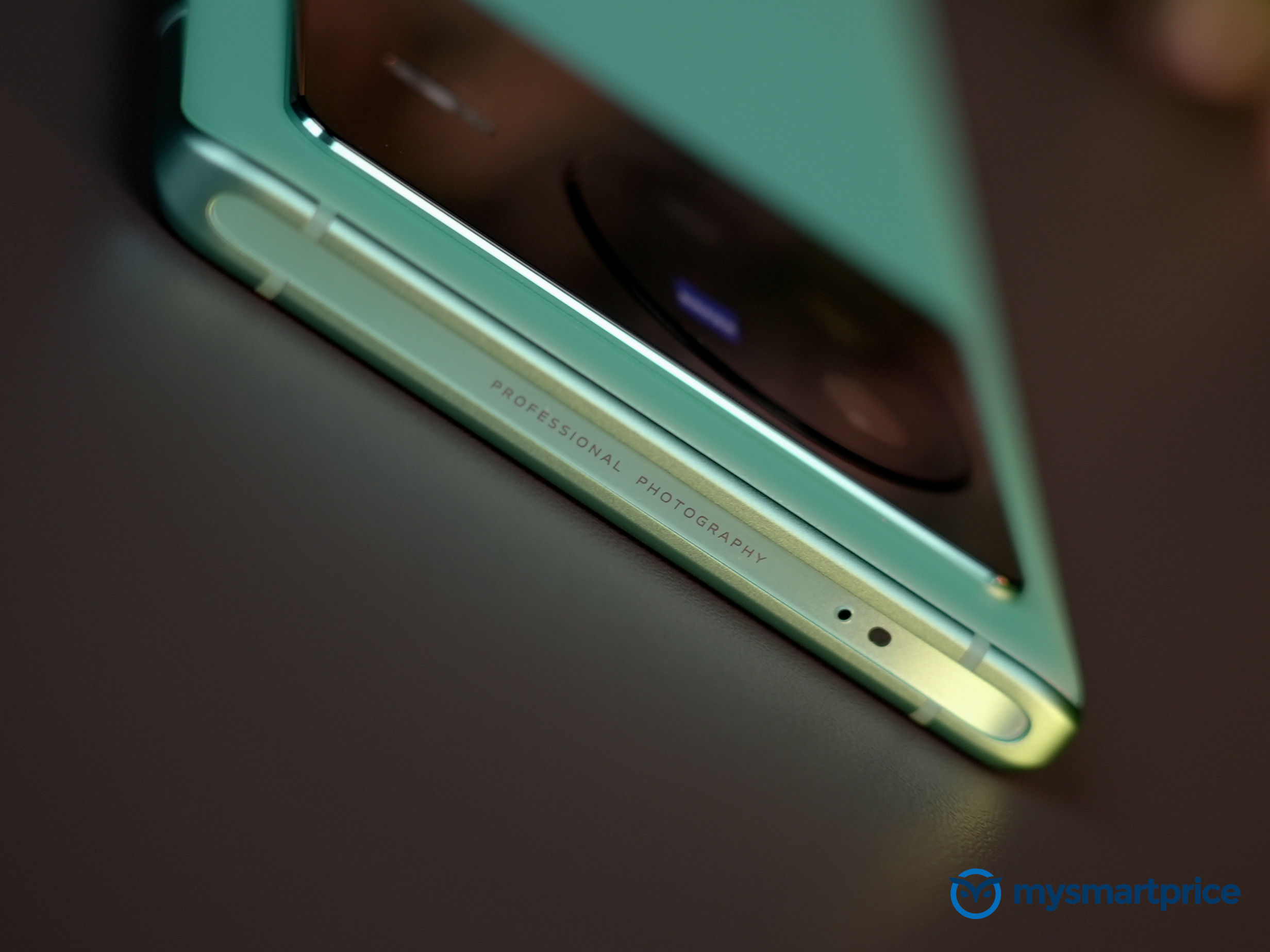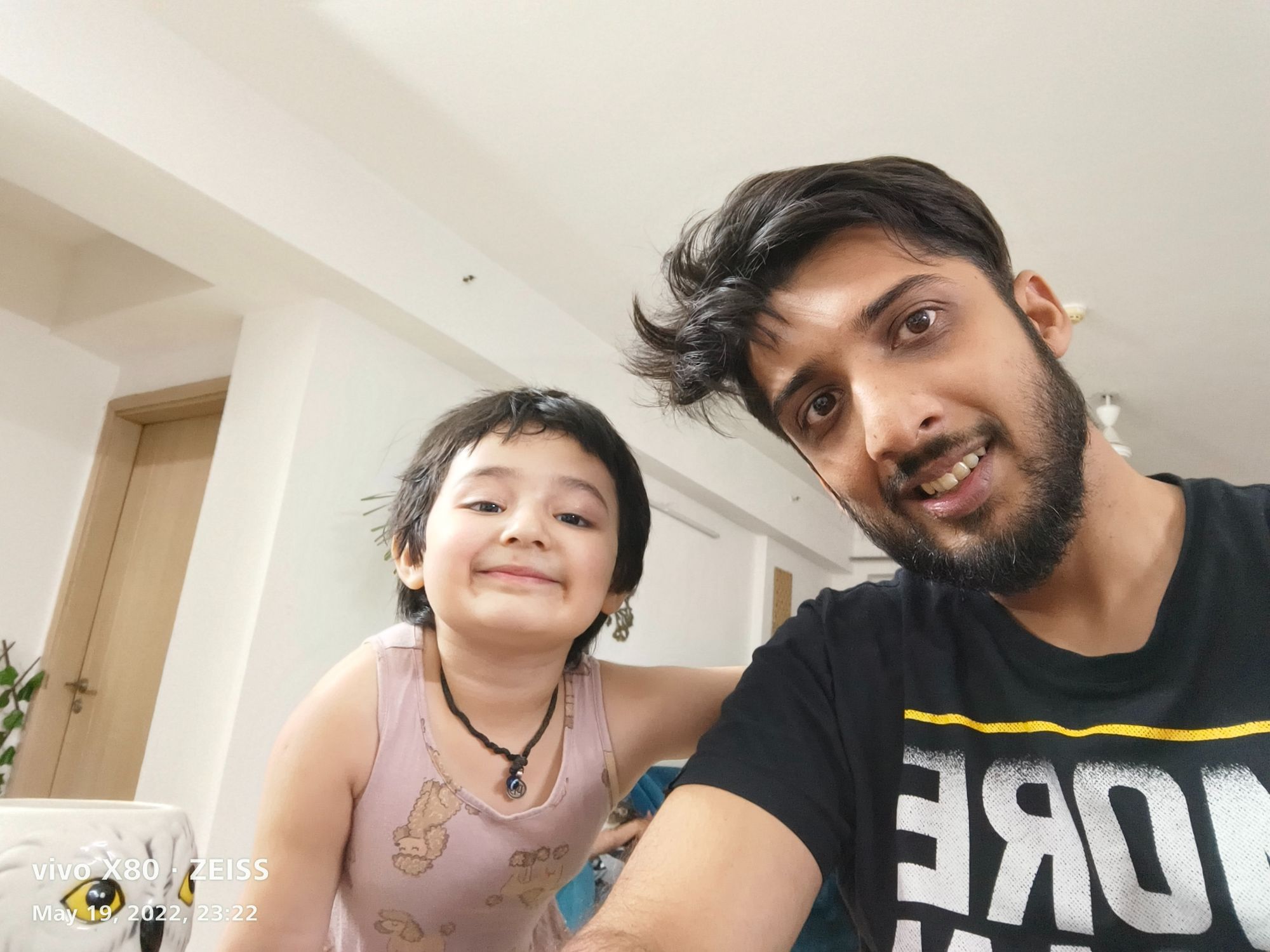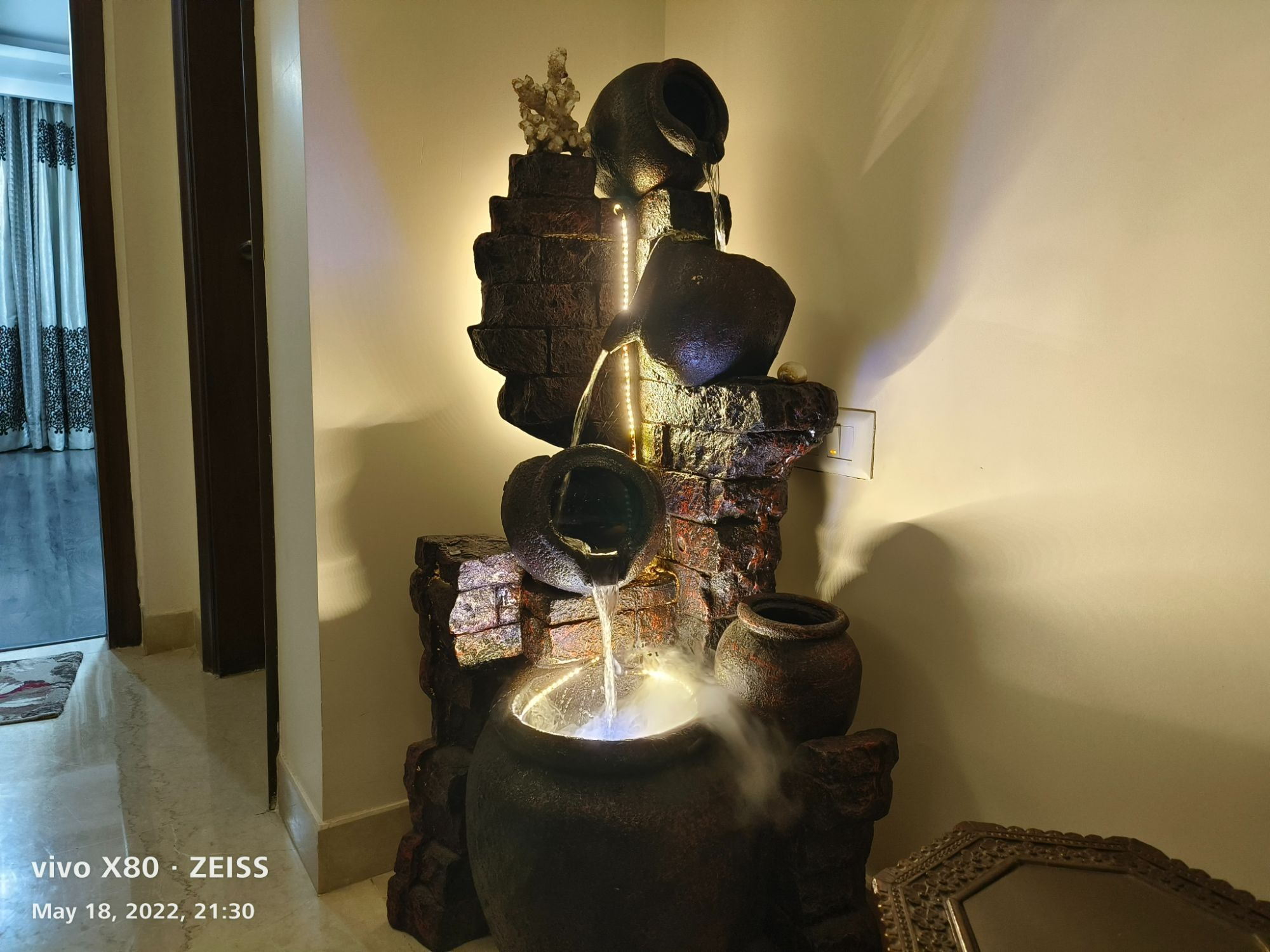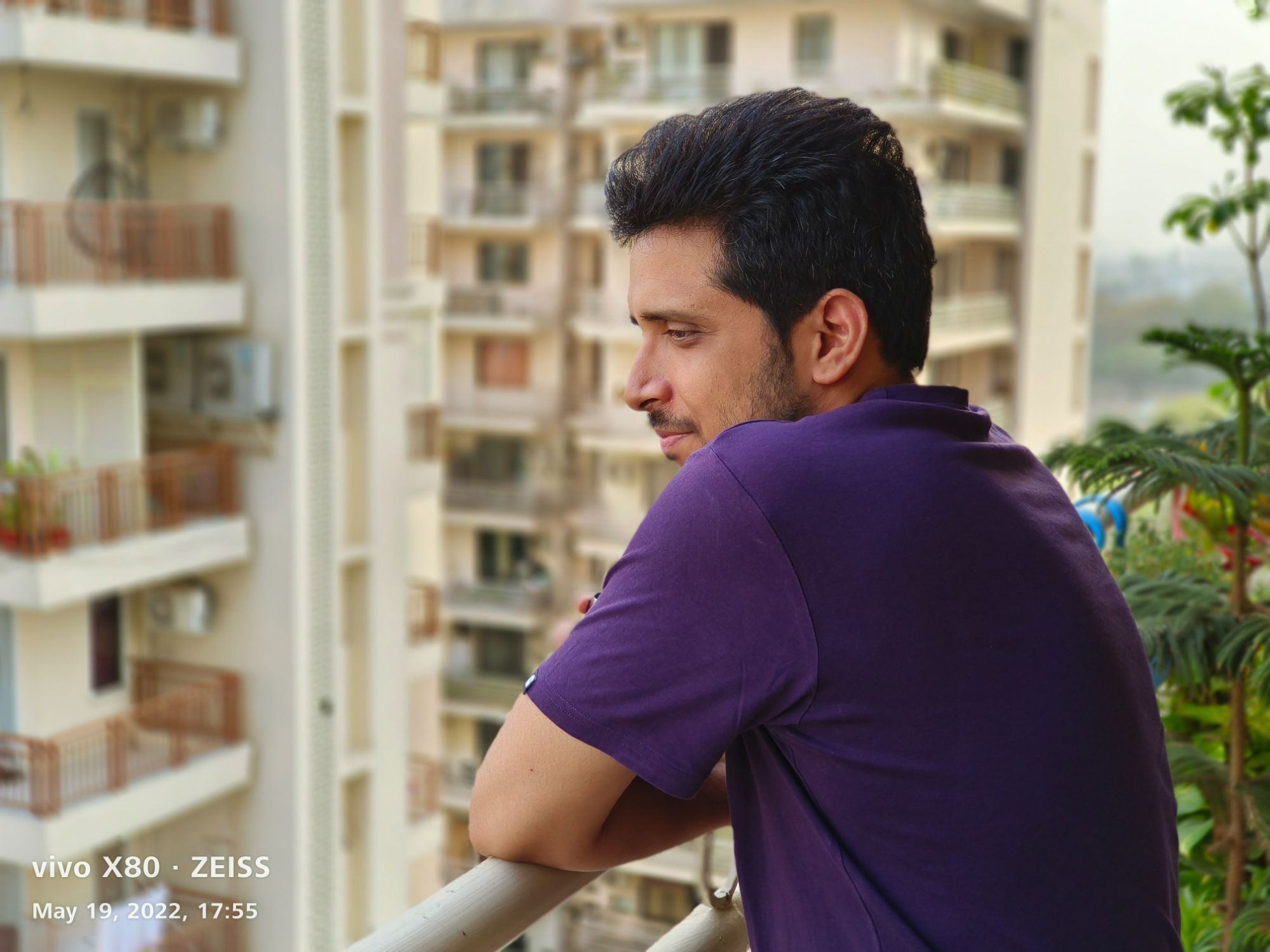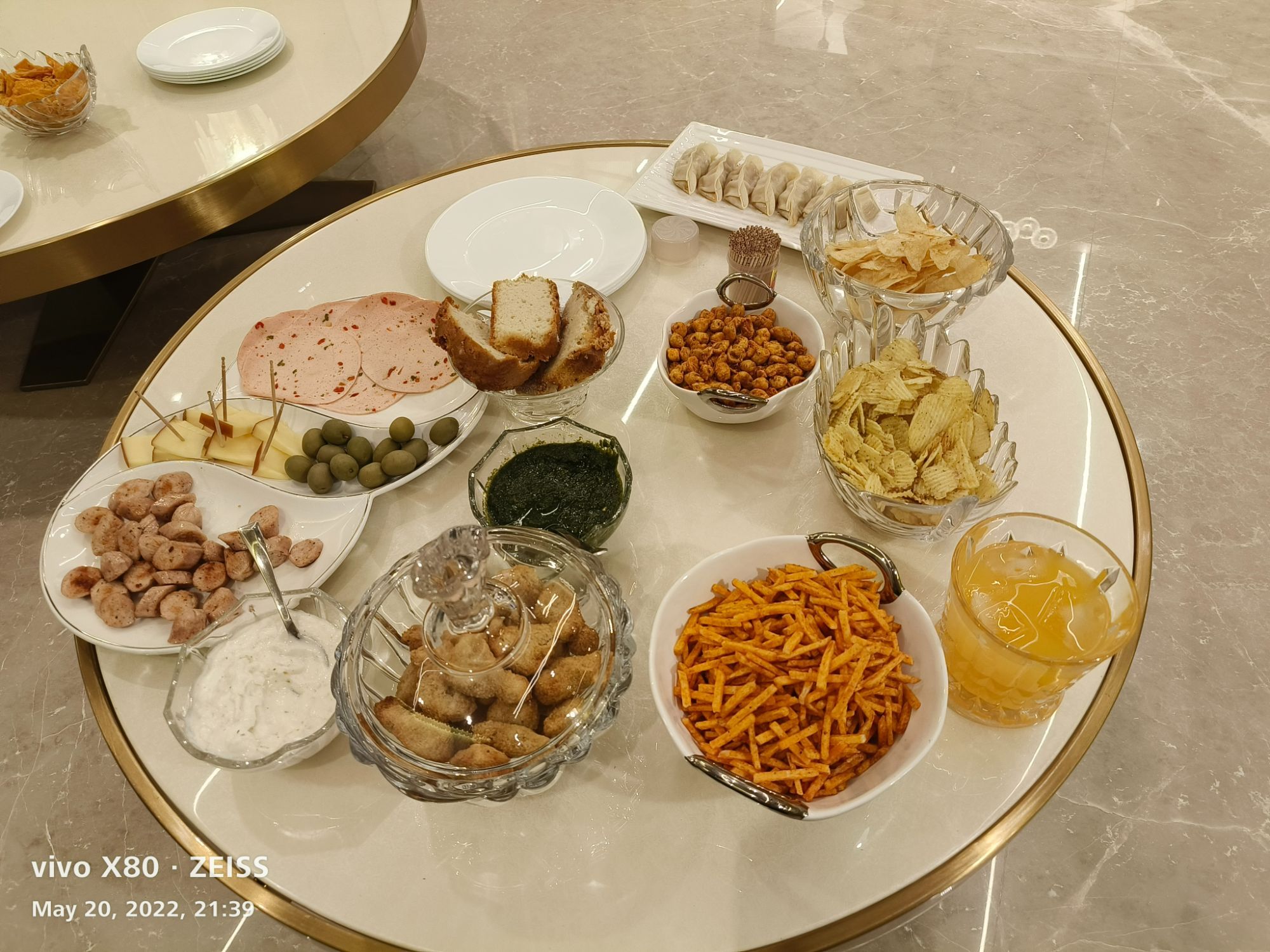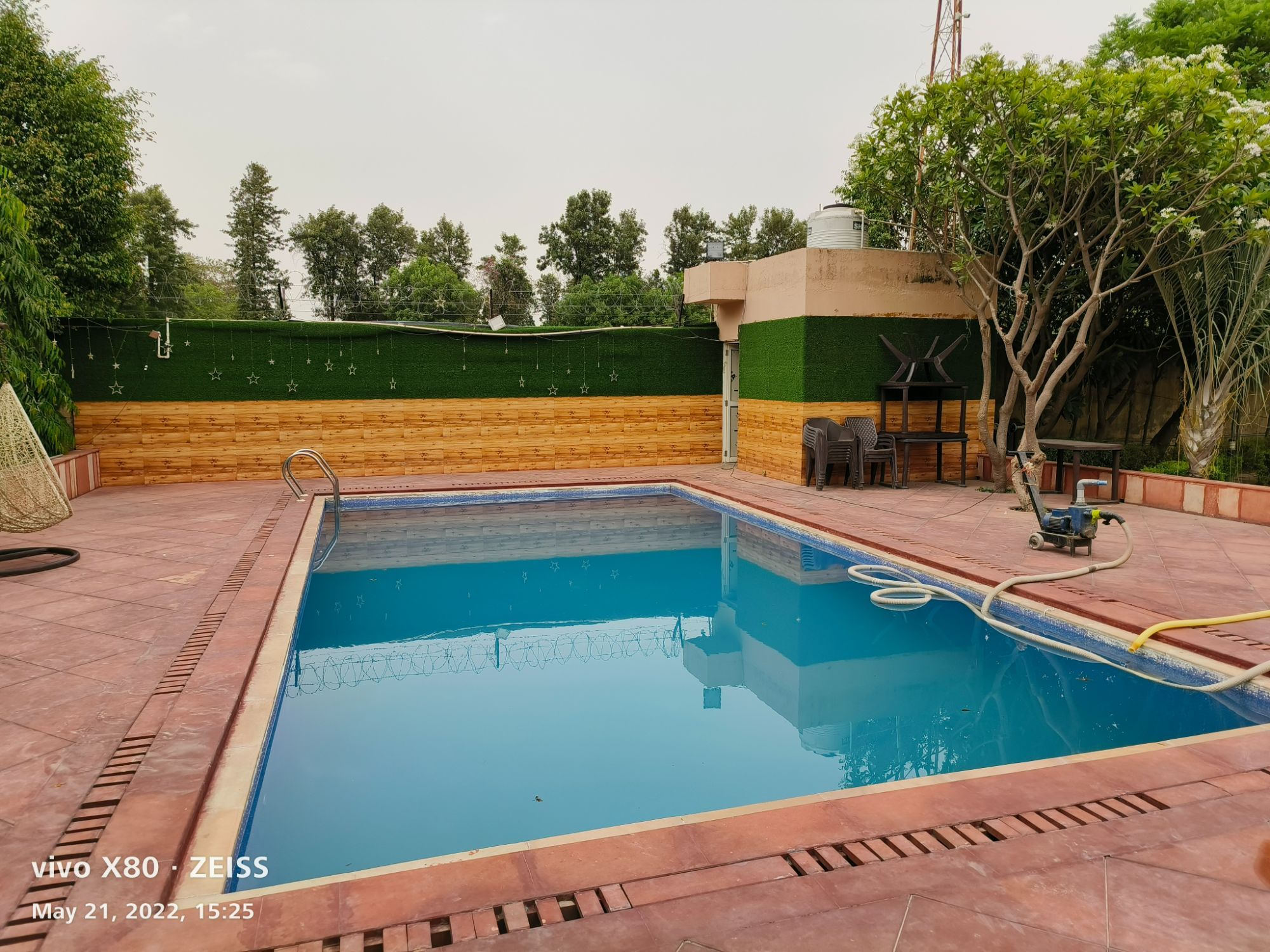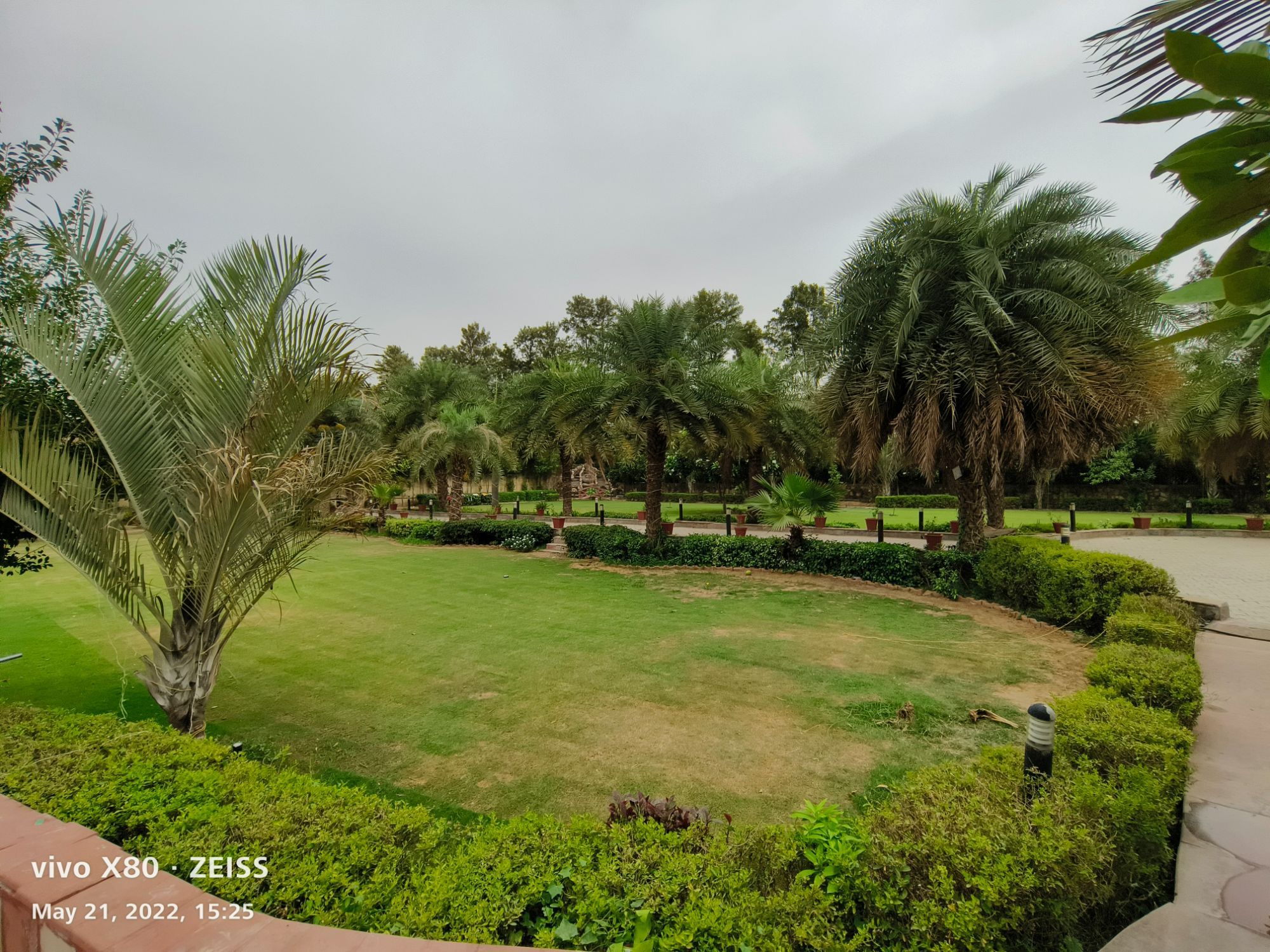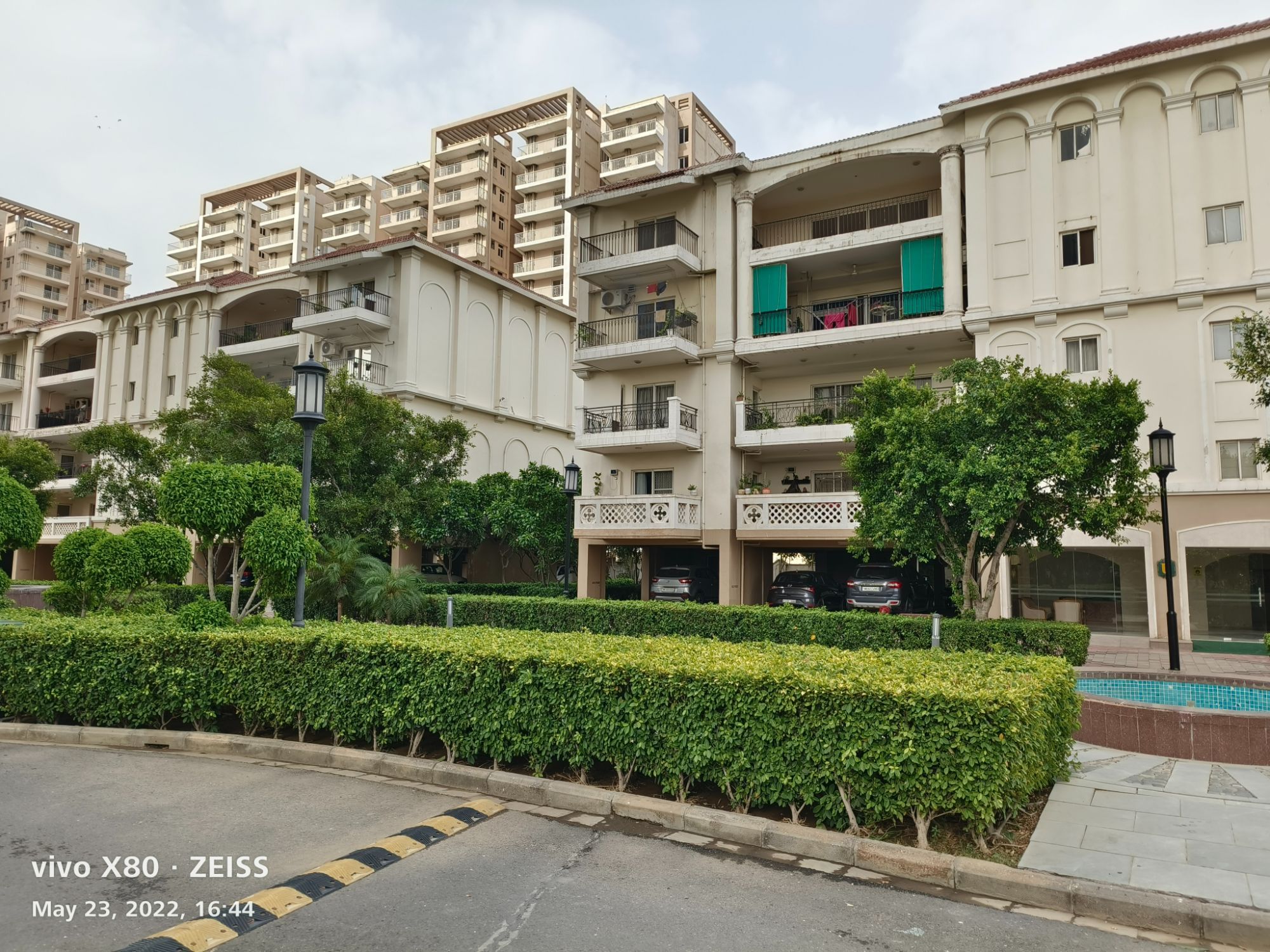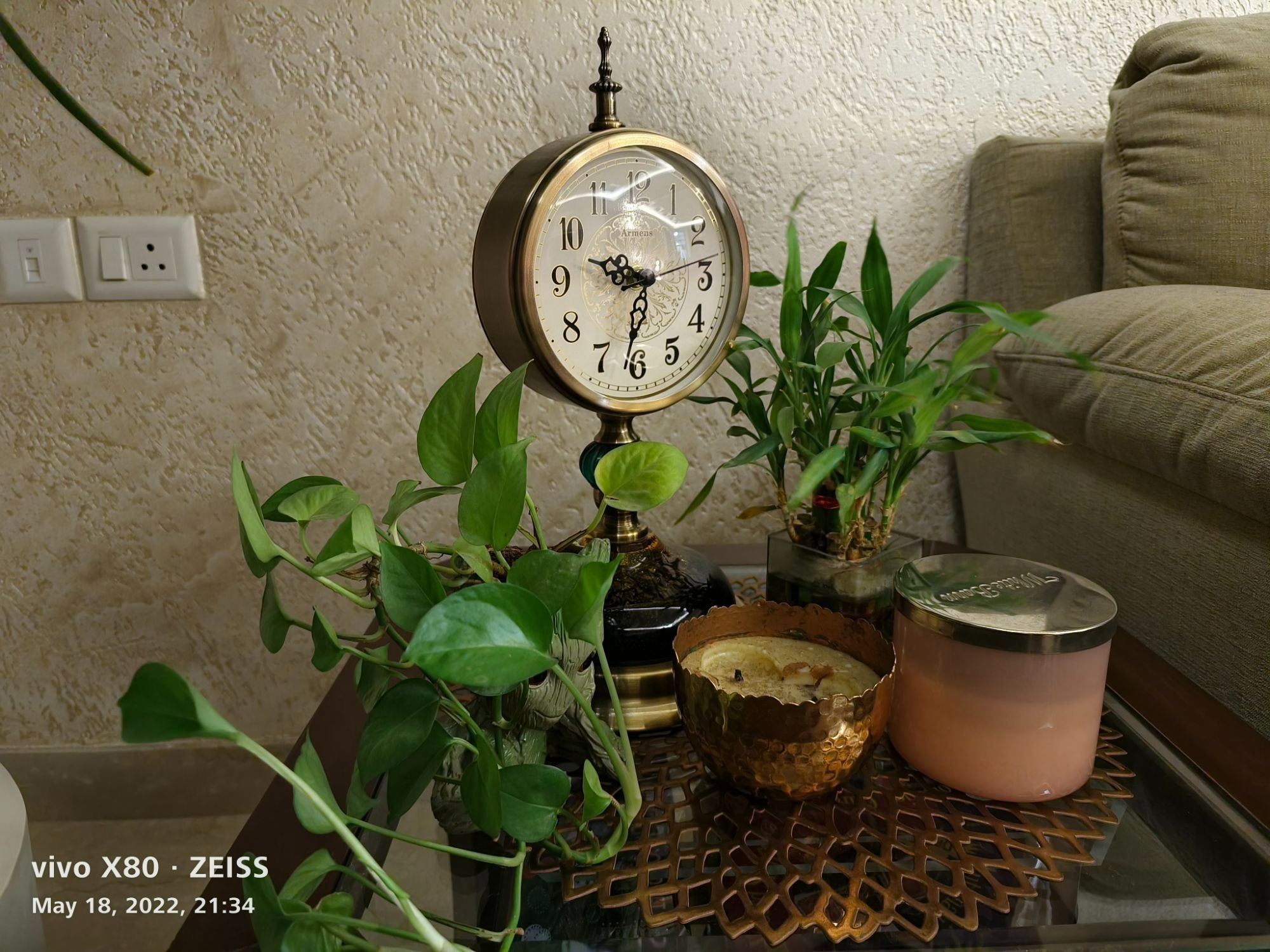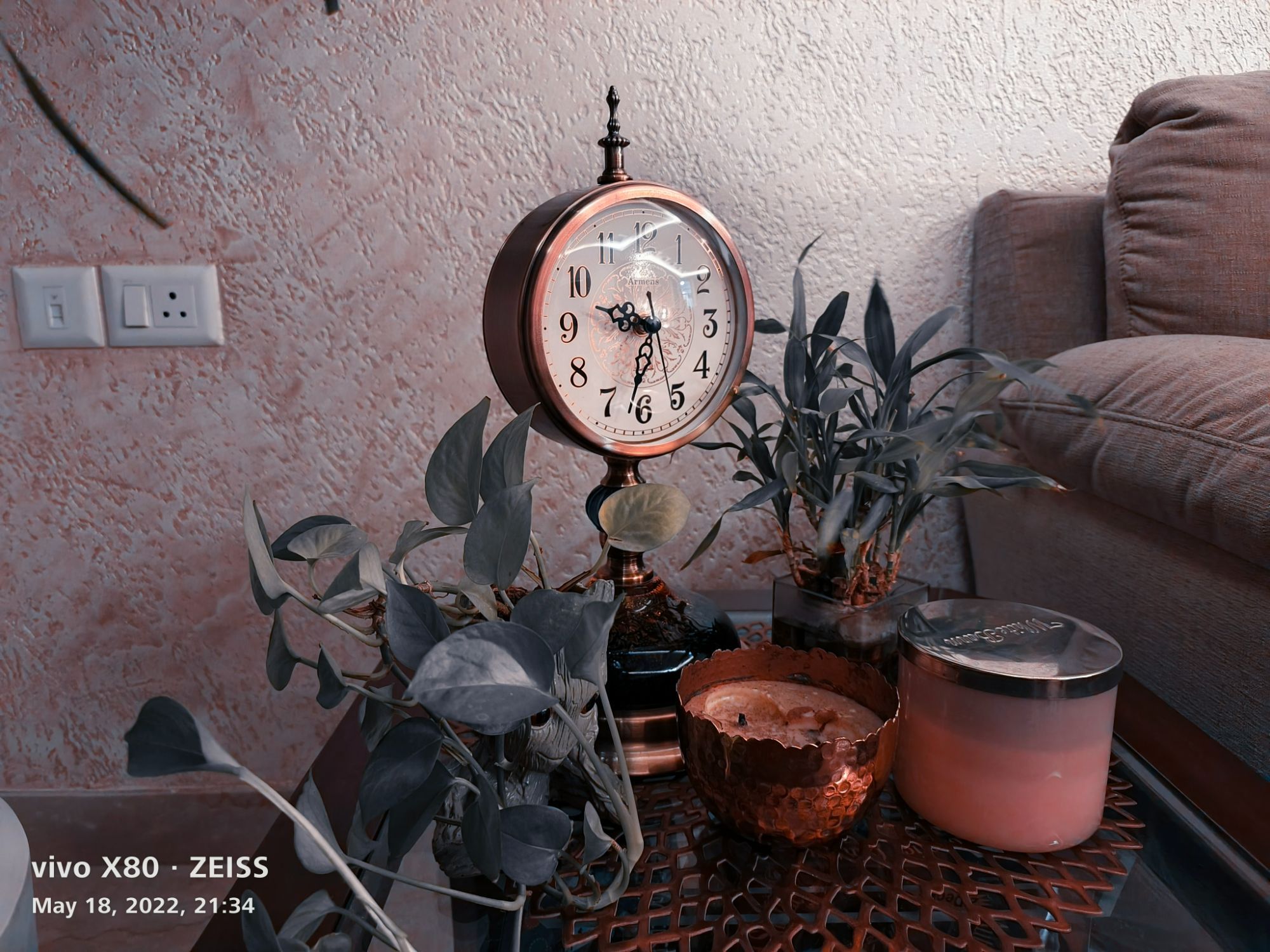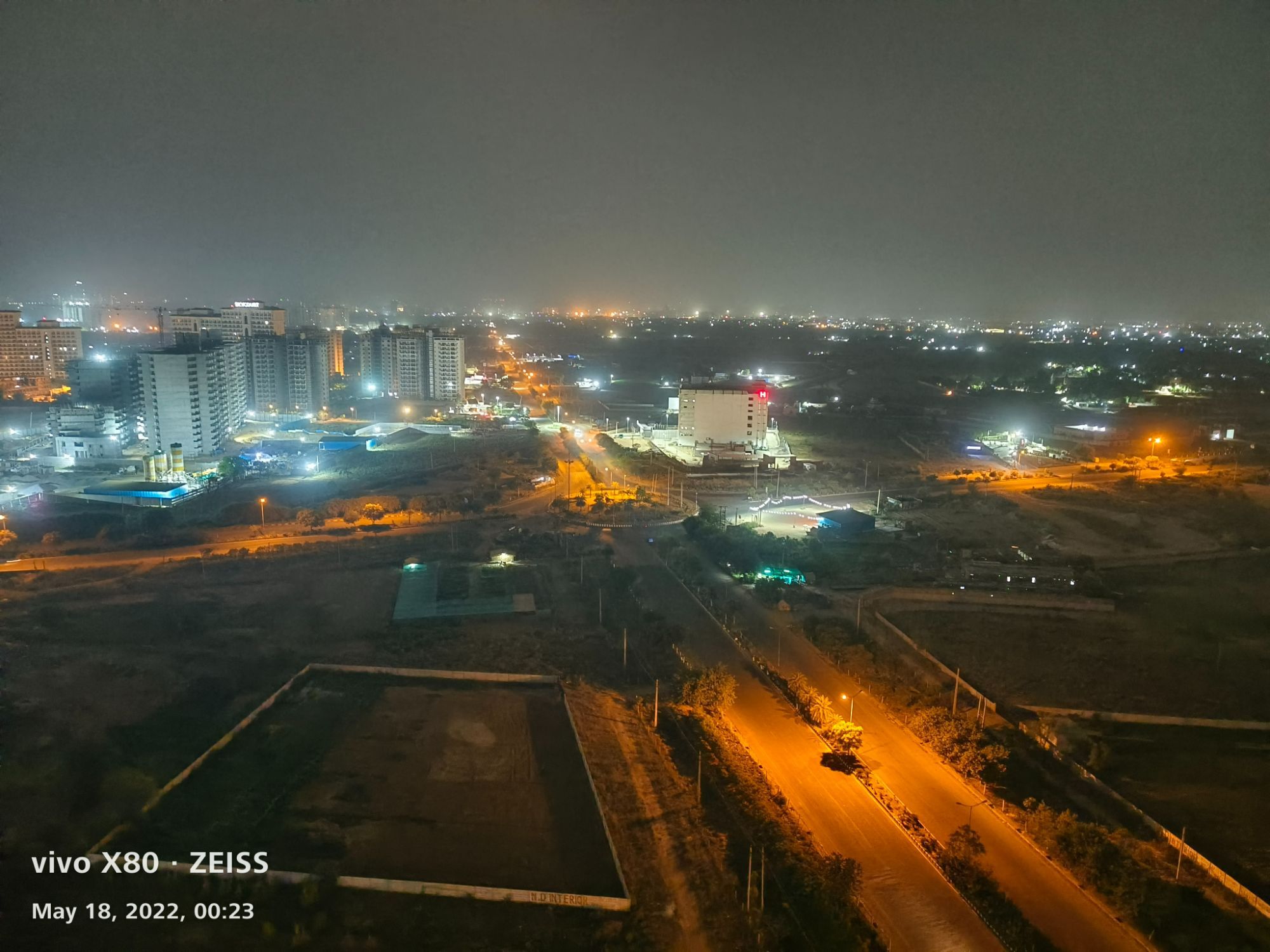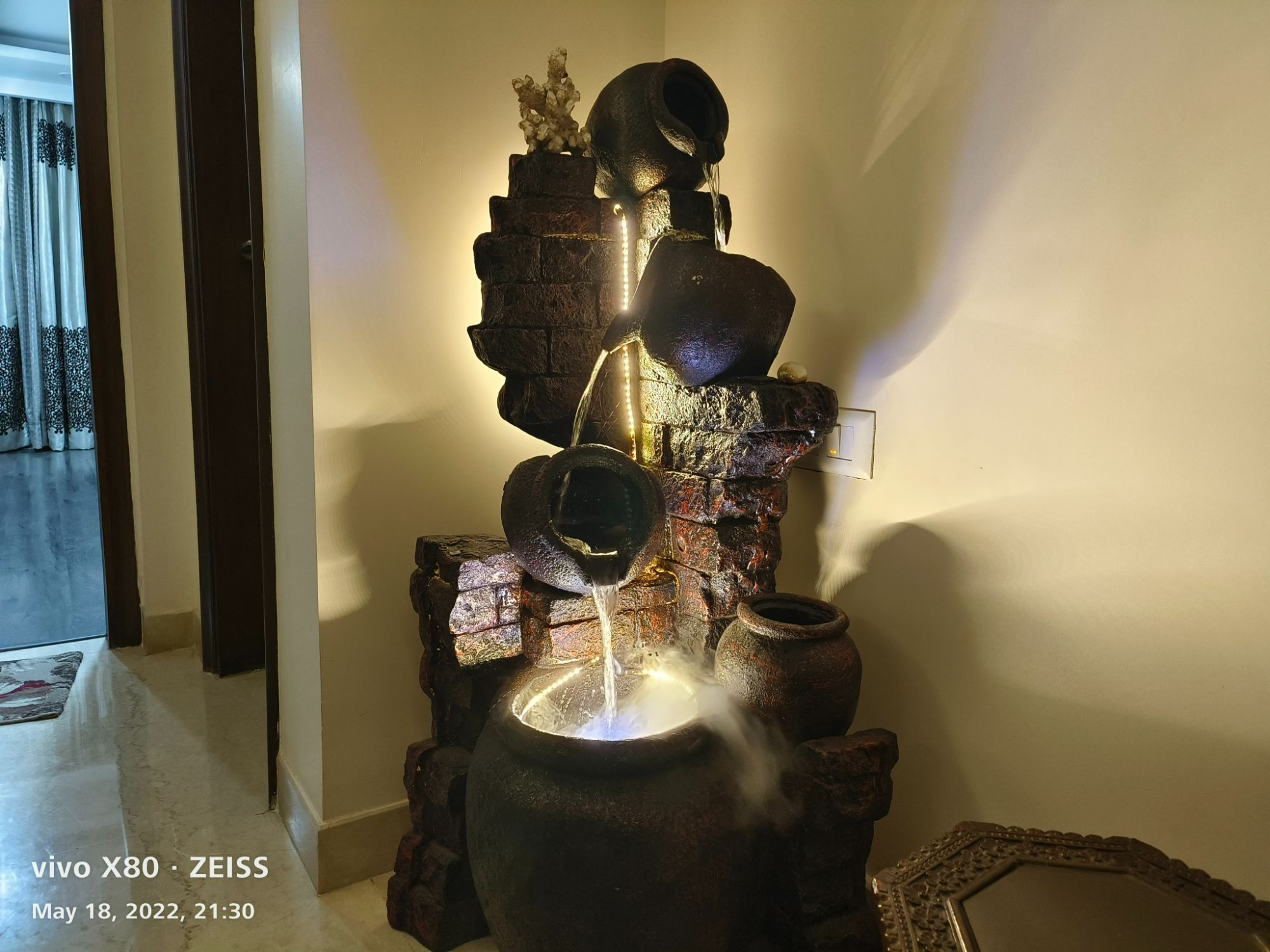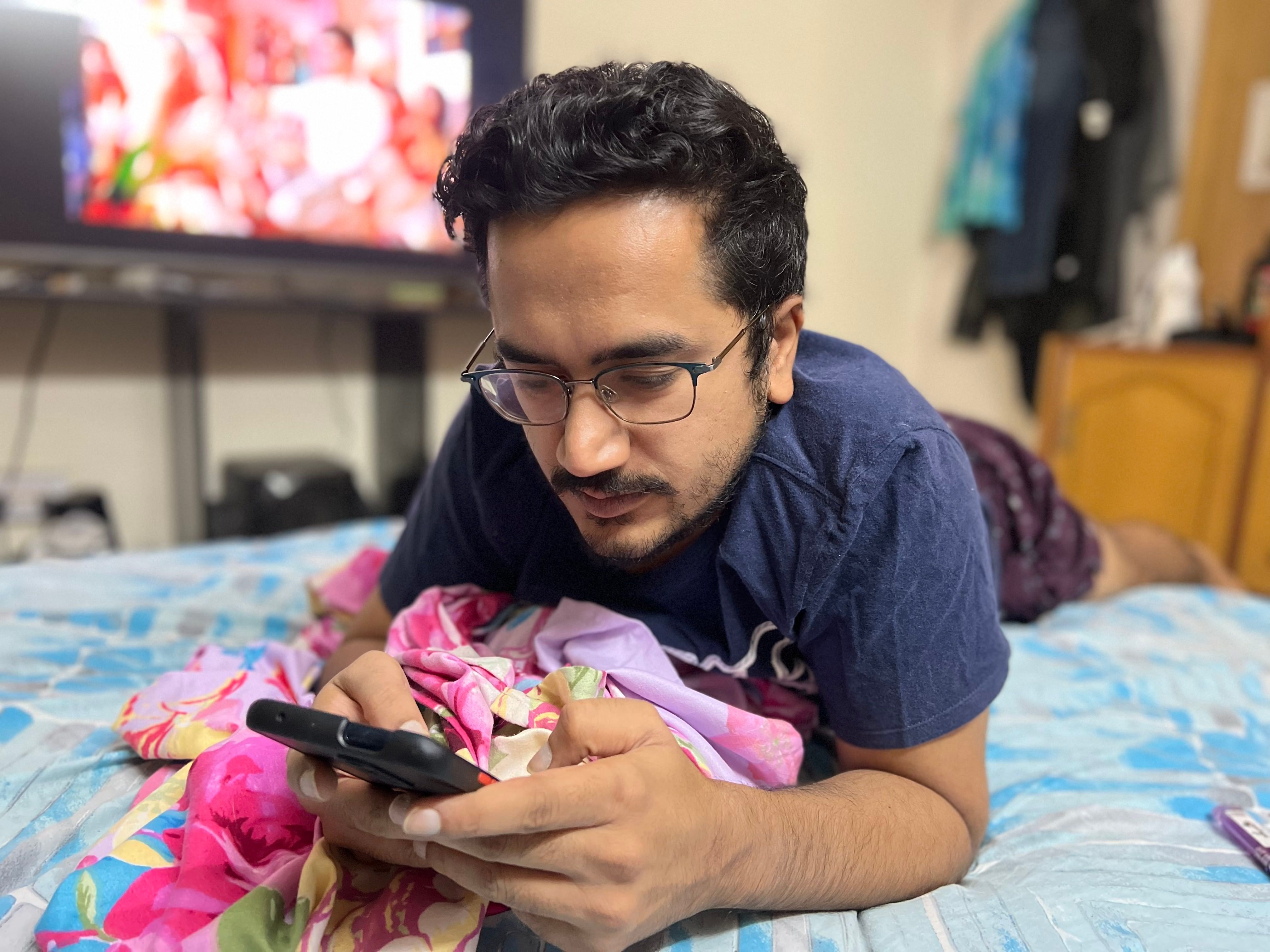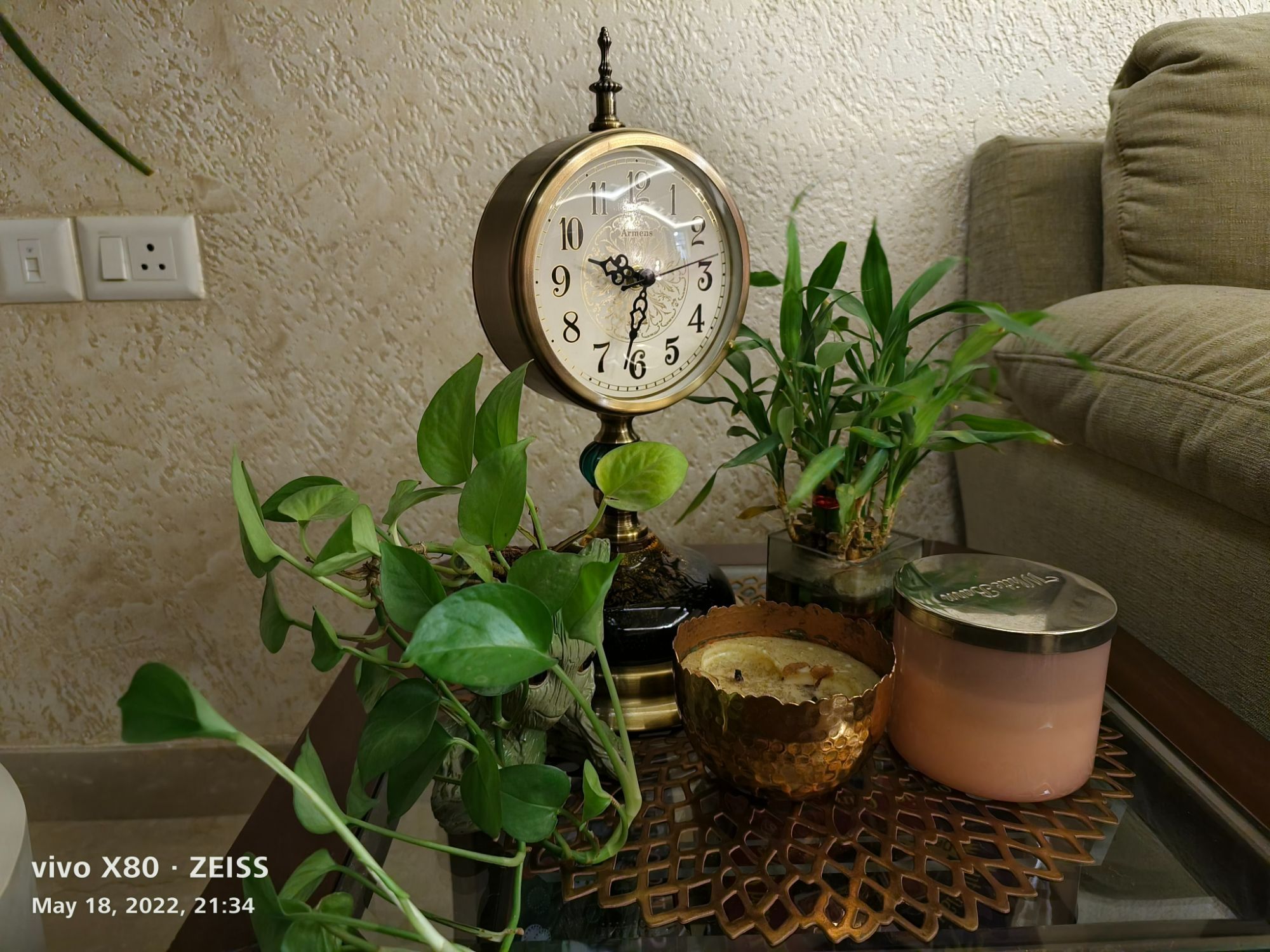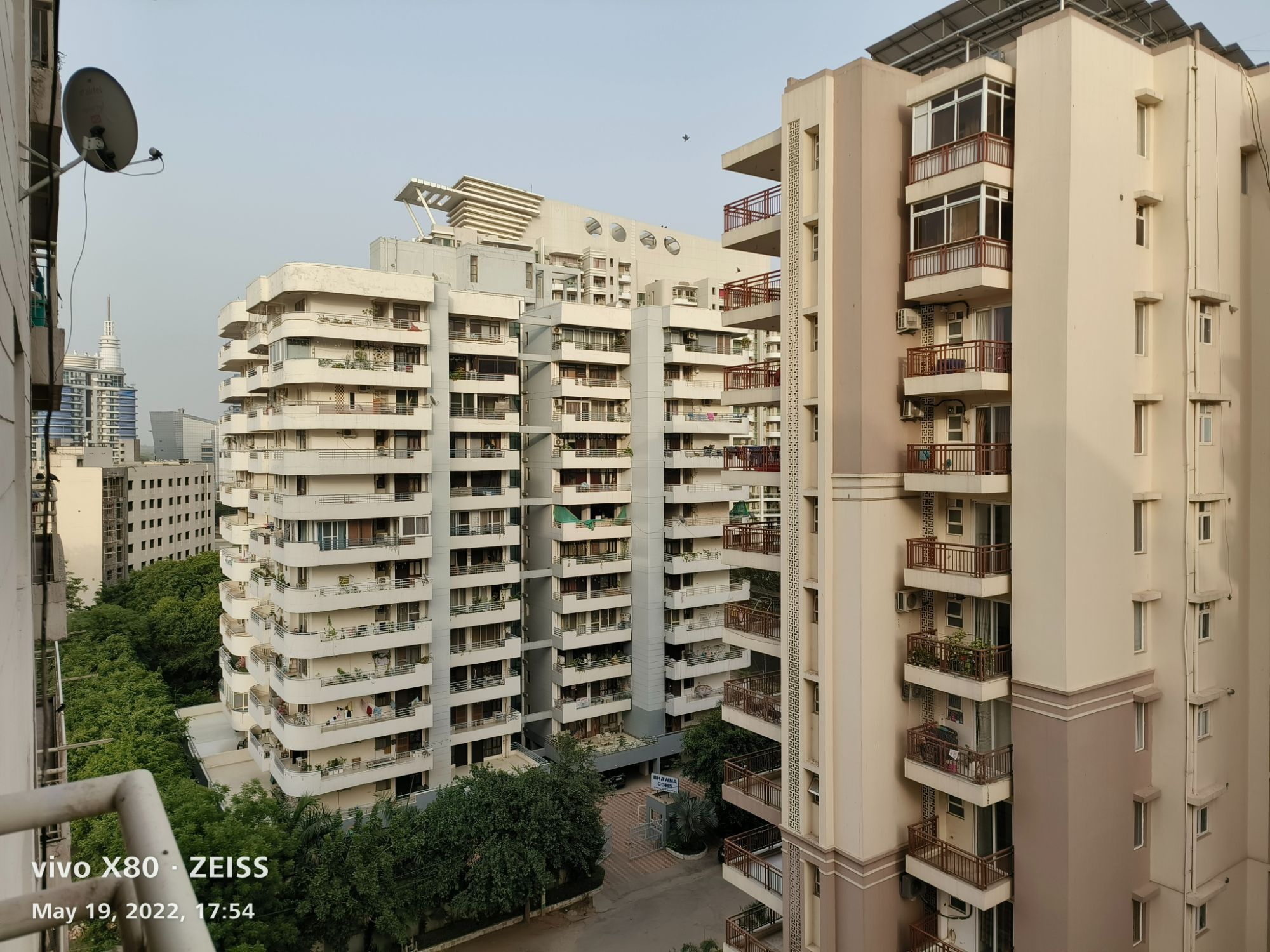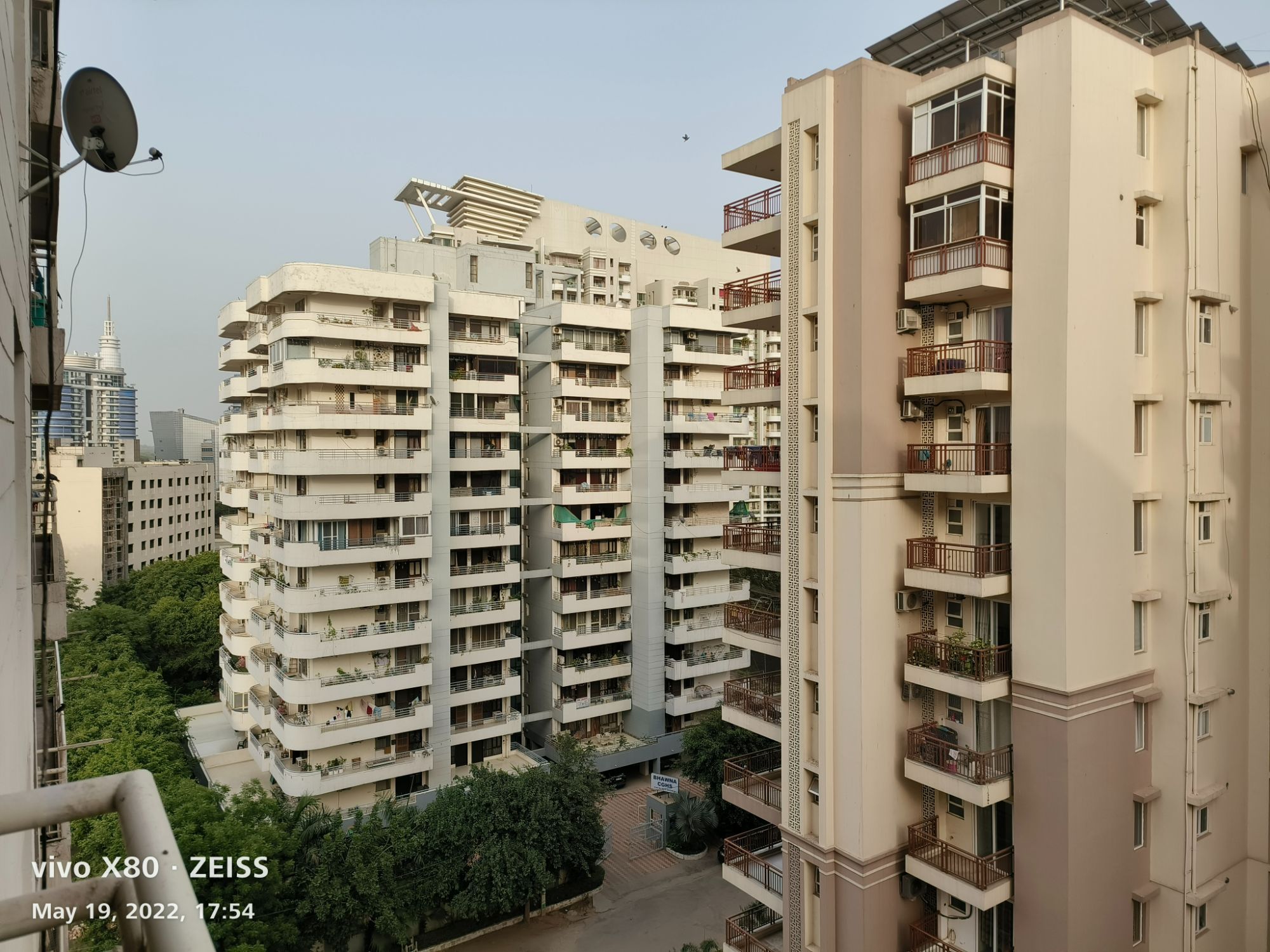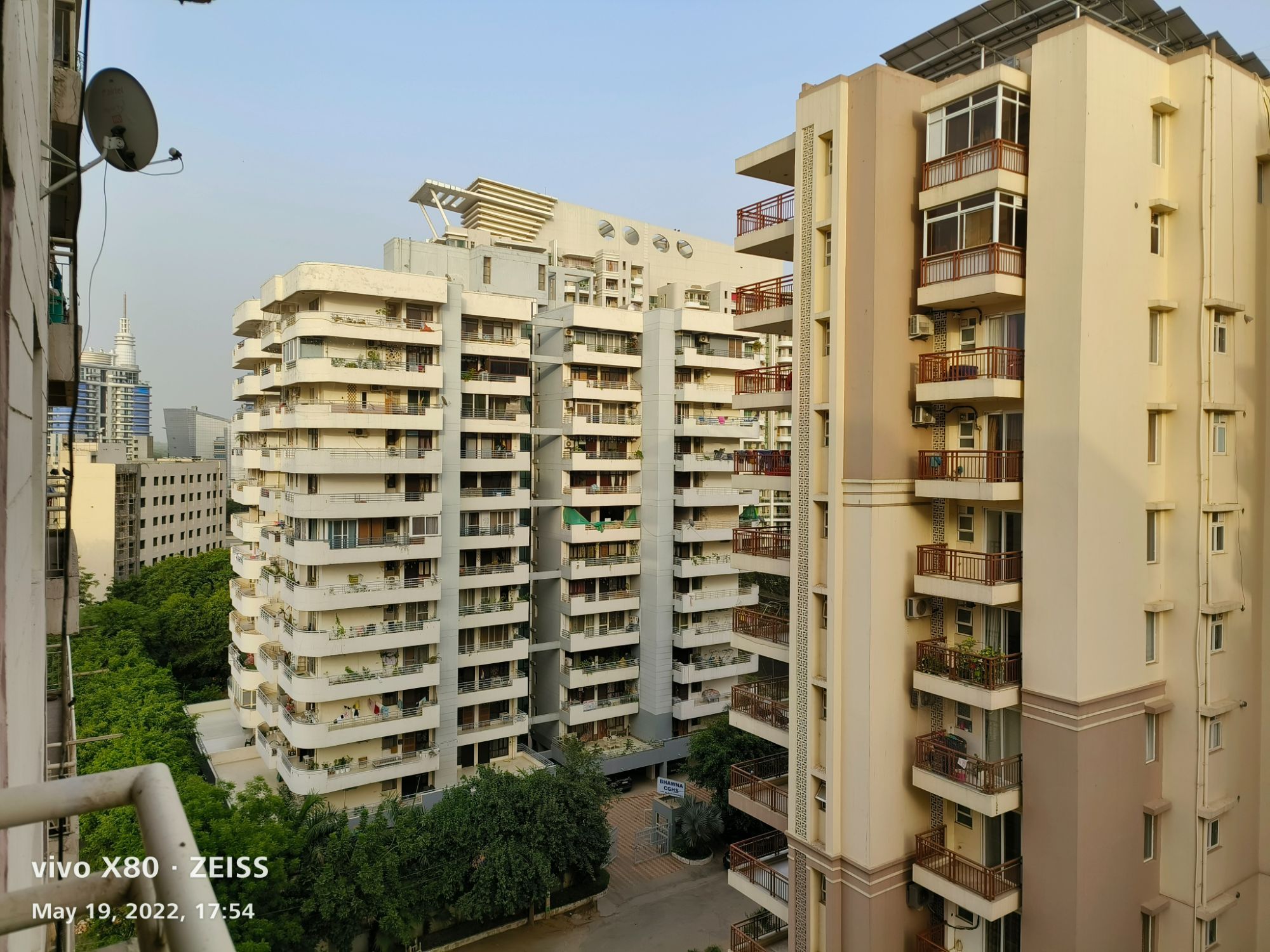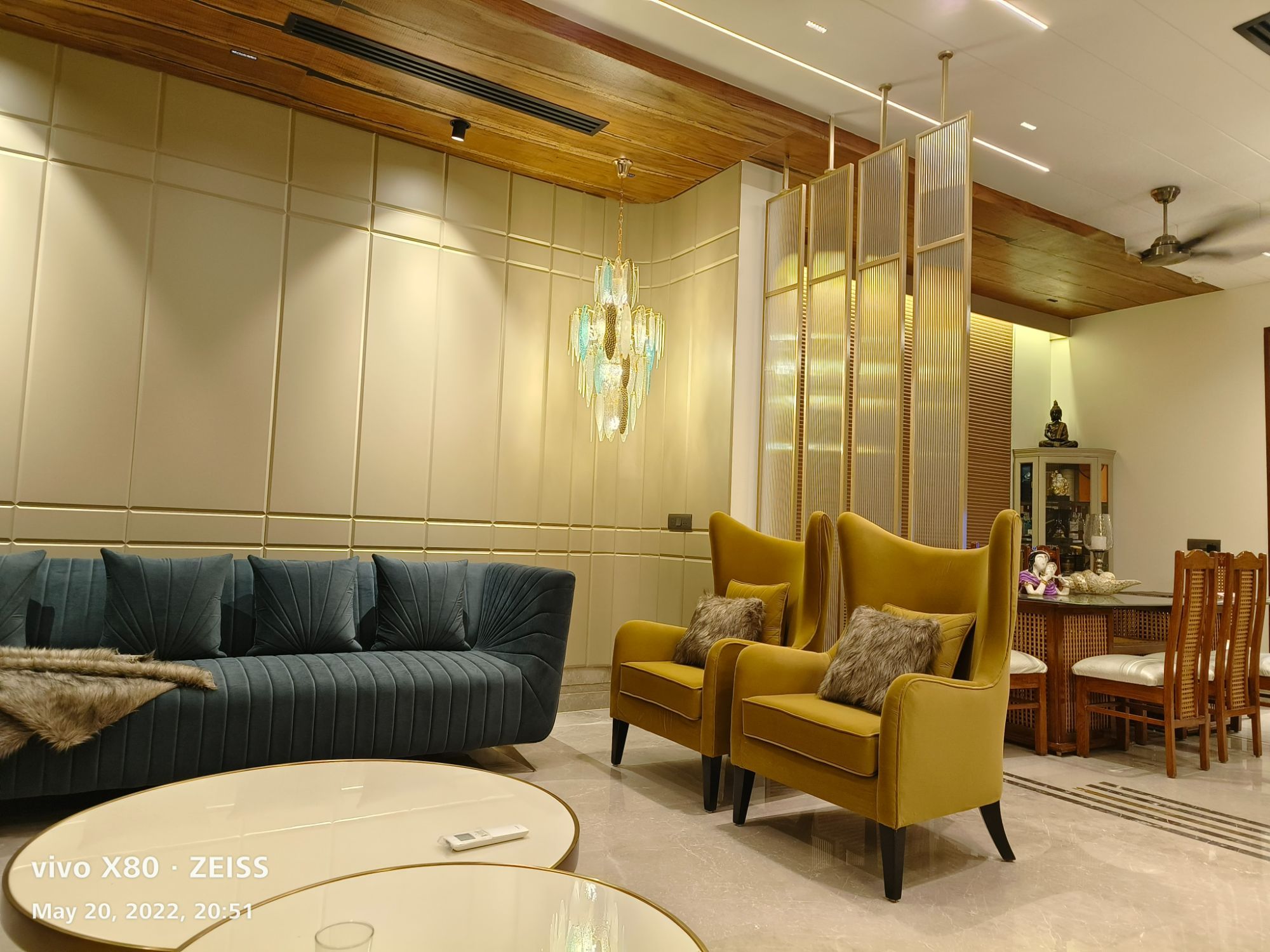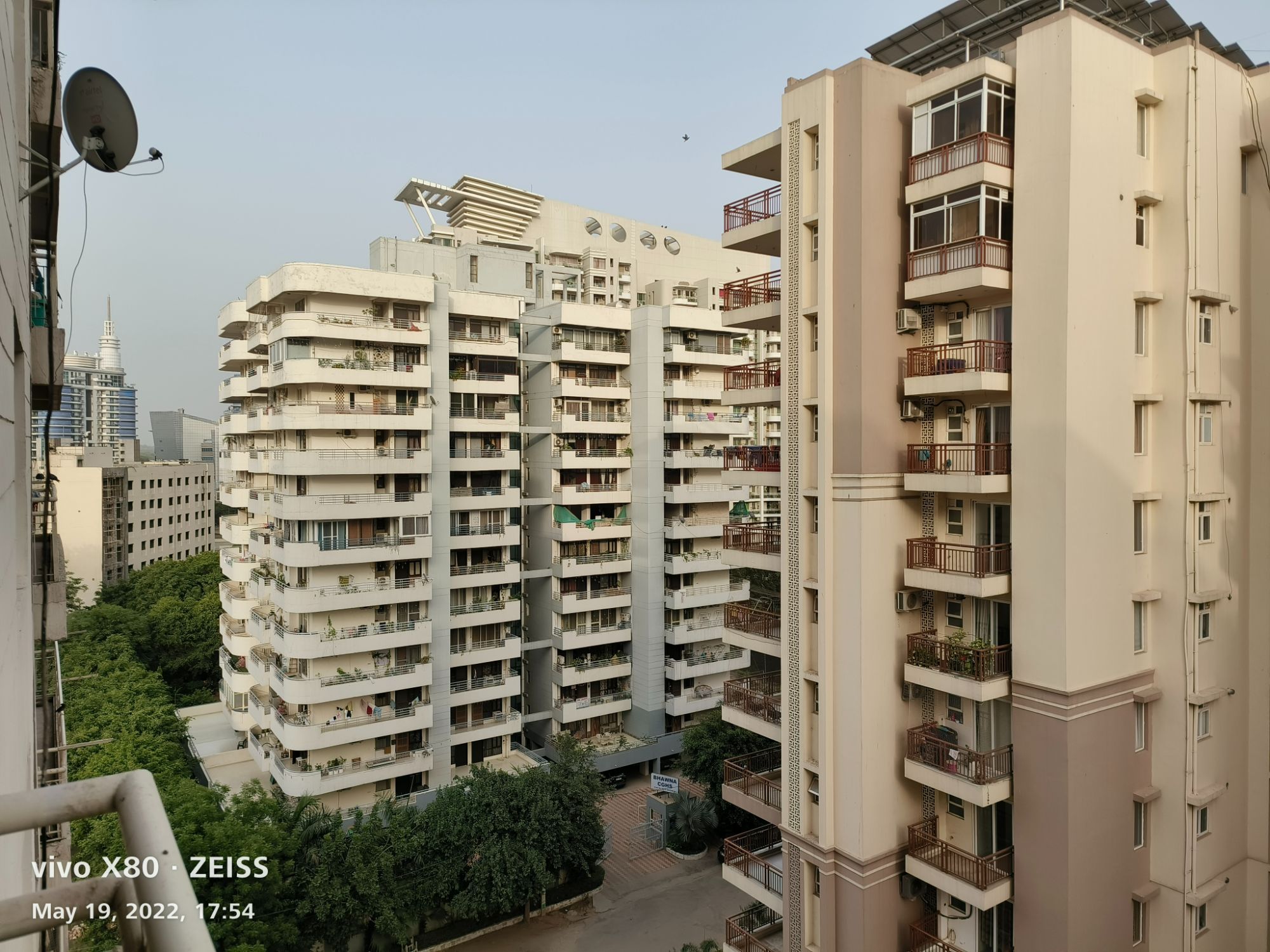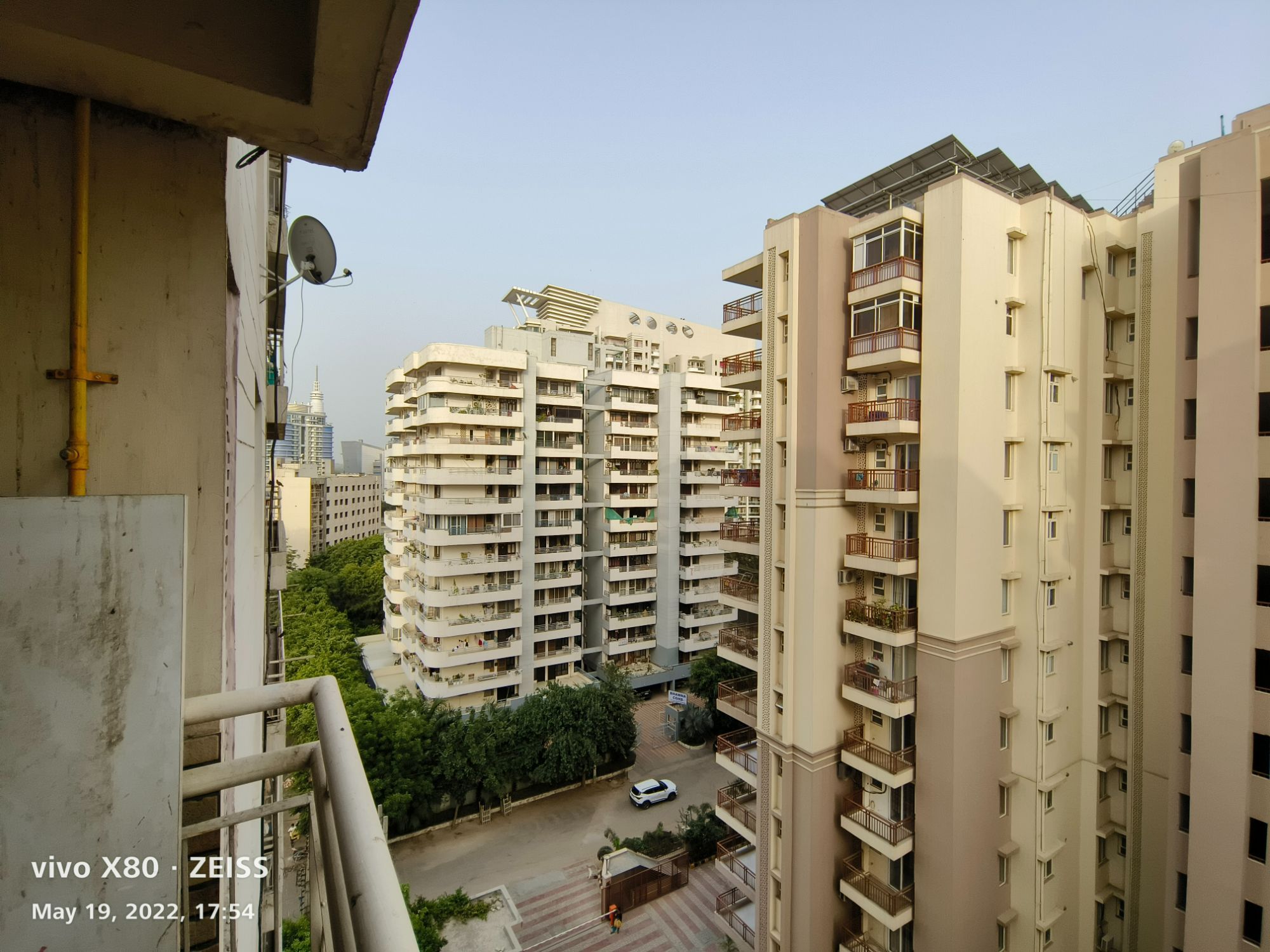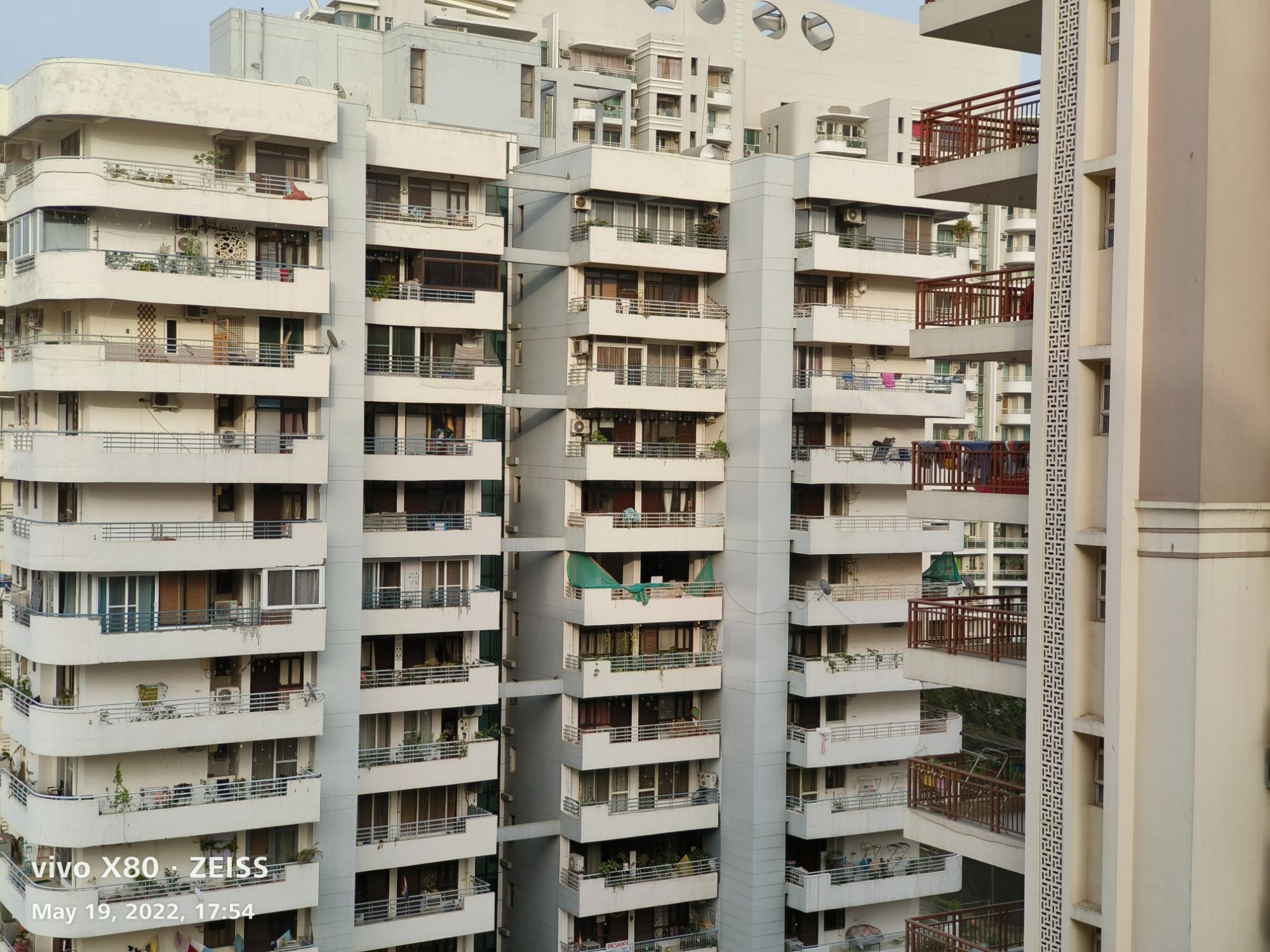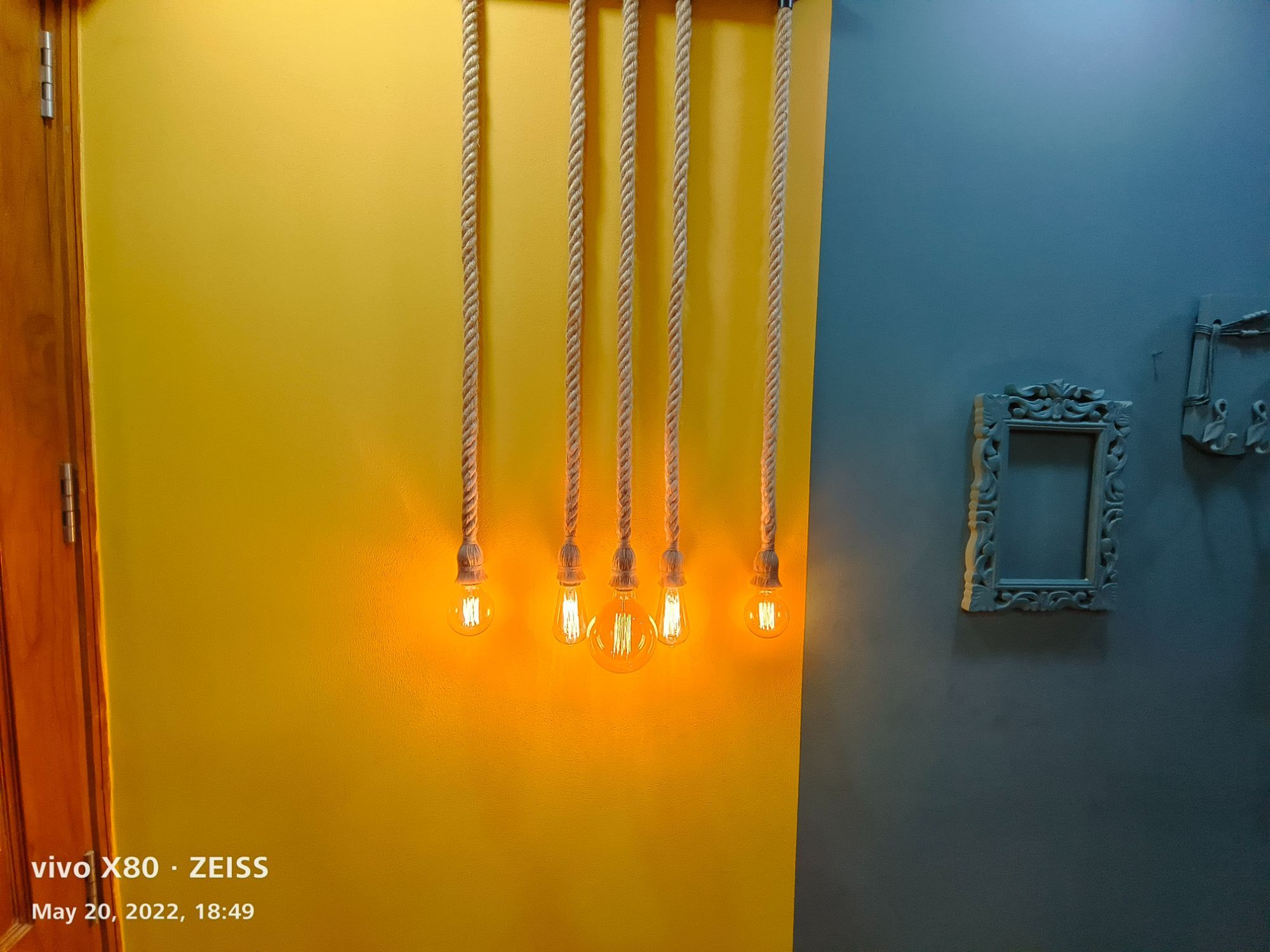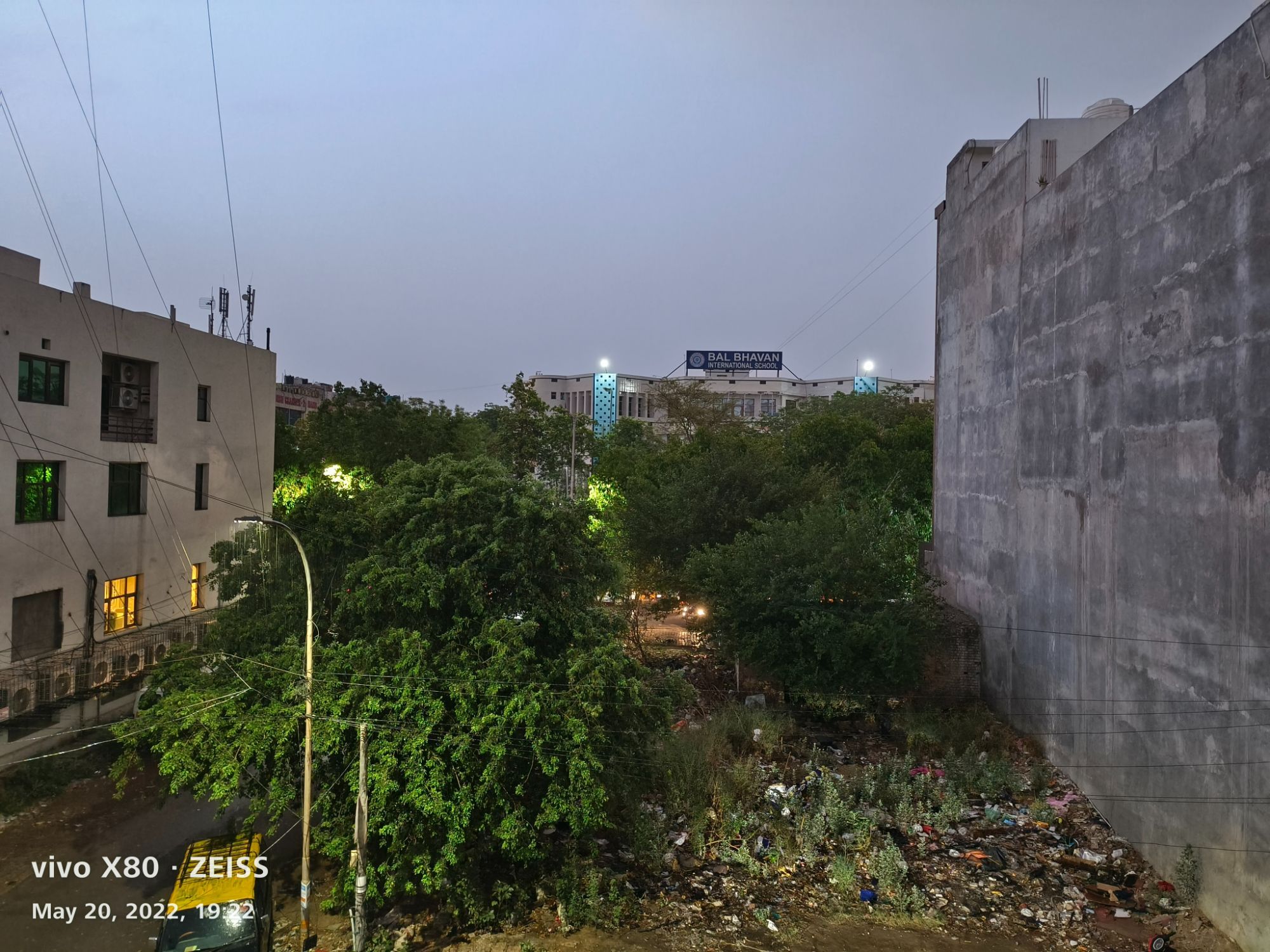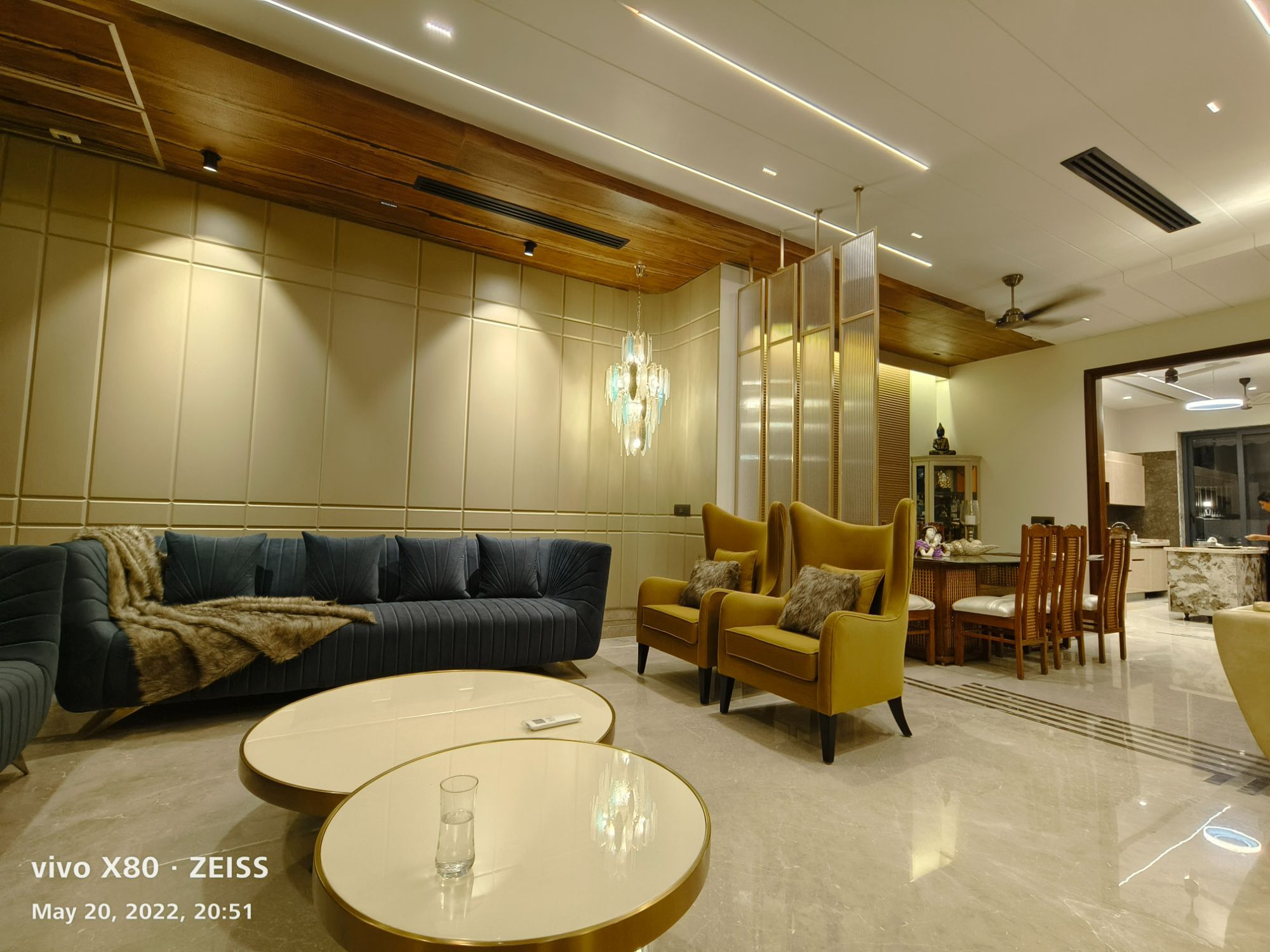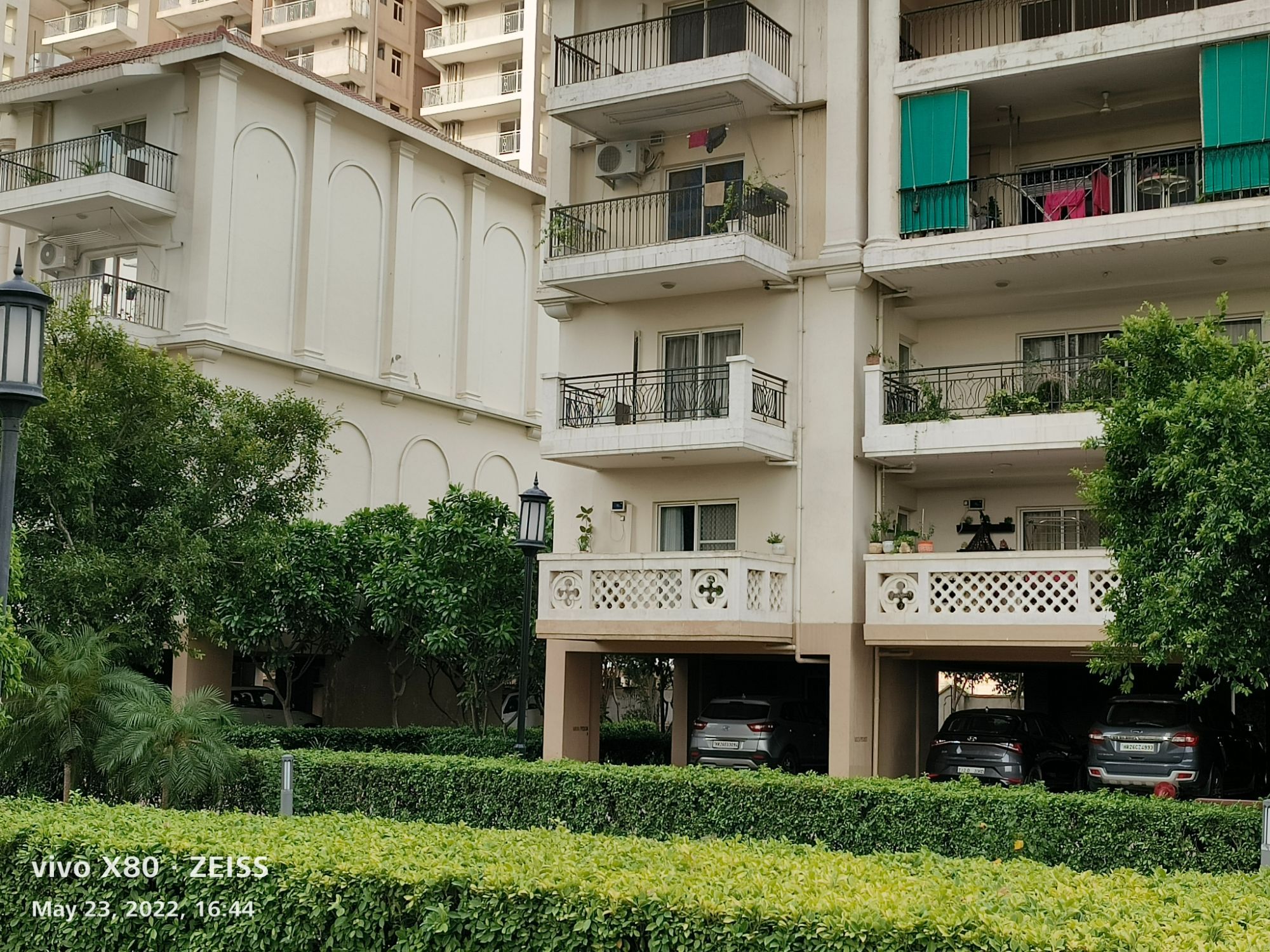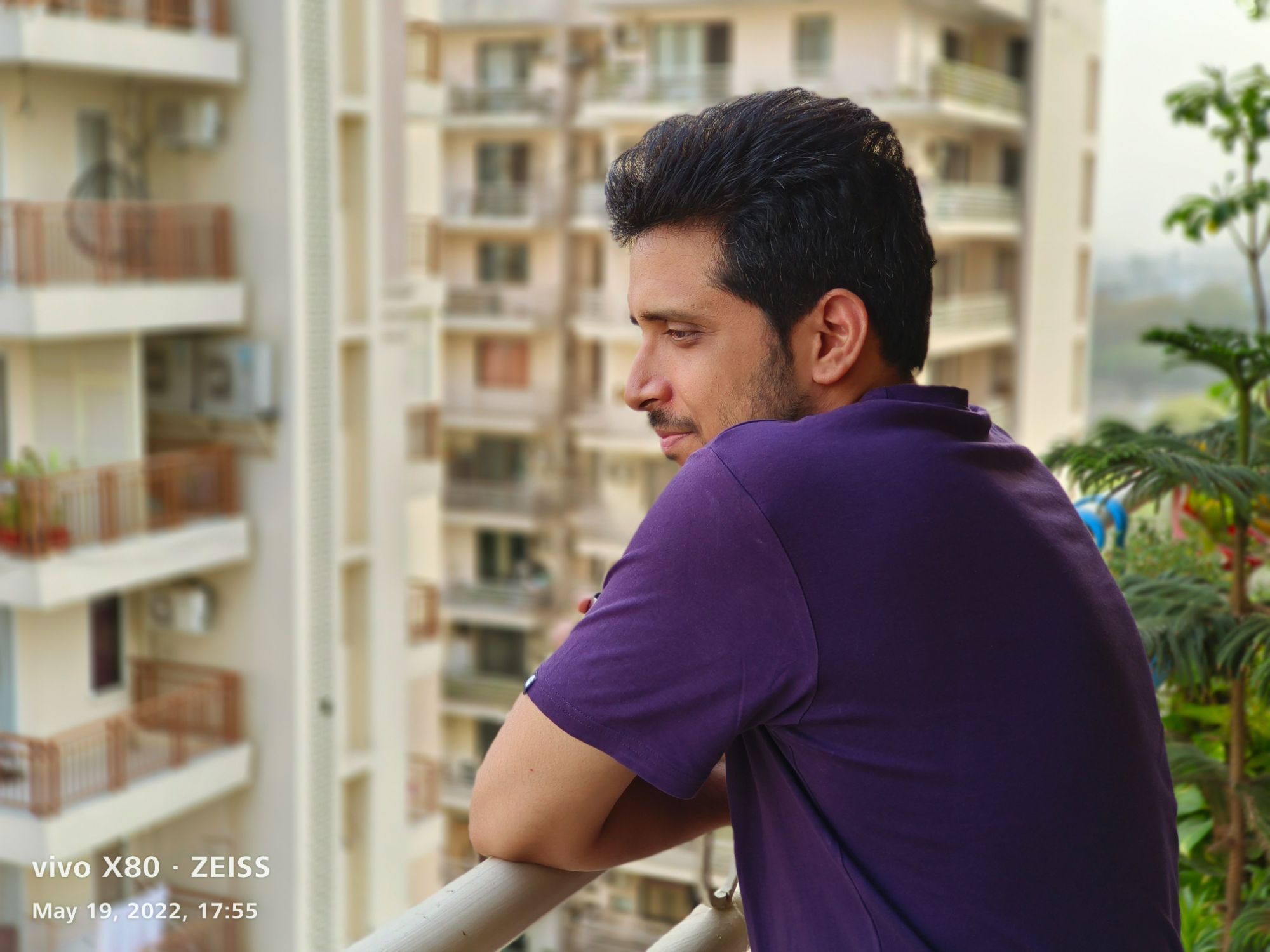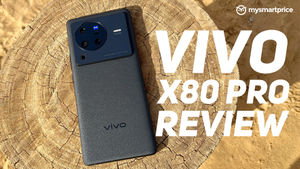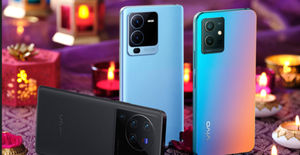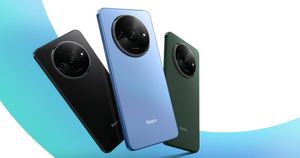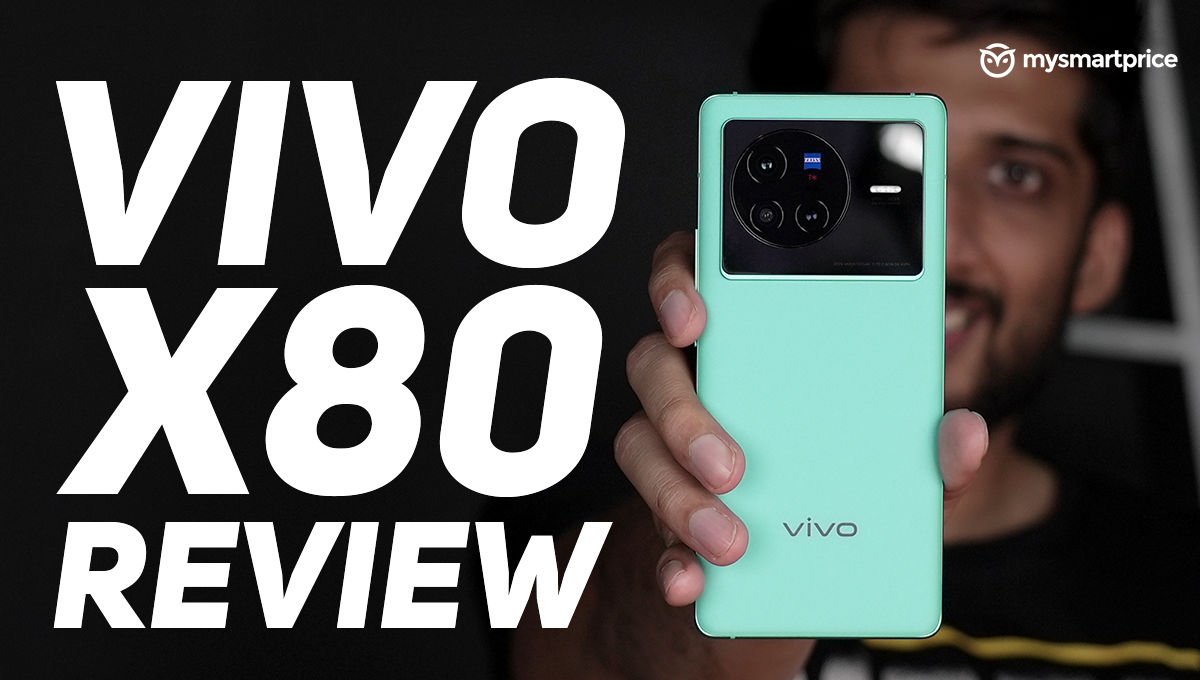
Vivo created a storm last year by launching 3 phones in the X60 series catering to price points from INR 35K to 70K. 6 months later, with the X70 series, they skipped the non-pro model and debuted only the X70 Pro and Pro+ models in India. Cut to 2022, and we finally have a new non-pro model, the Vivo X80. Although with a price tag of 54,999 and the specs that it packs, it is hard to remember that. I got to use the X80 as my daily driver for about 10 days and I’m seriously impressed with the phone. But with phones like the Realme GT 2 Pro and Xiaomi 12 Pro looming large in and around that price, is the X80 worth picking over the ‘Pro’ competition? I’ll try to answer all these questions in my review.
Vivo X80 Review: Design and Build
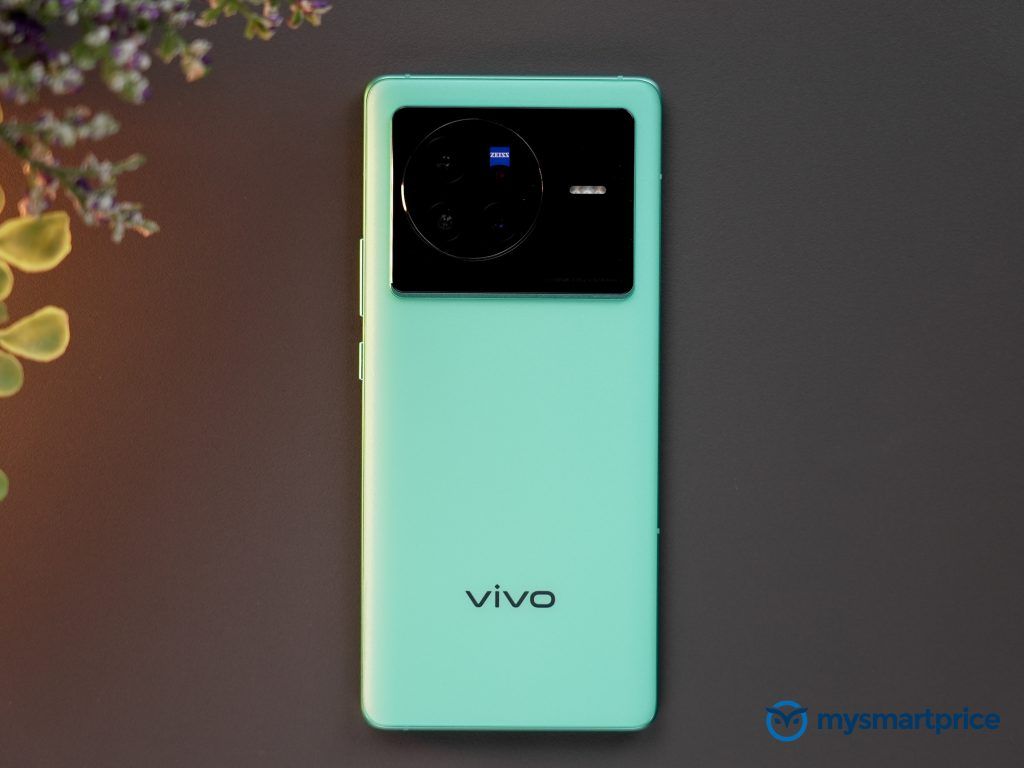
I know the main talking points about the X80 series are the cameras, but I’m pretty sure the first thing people will fall in love with after picking this phone is the design. I have the Teal color variant with me and I absolutely fell in love with the shade of color used and just how premium it looks and feels in the hand. The back is all-glass and the sides curve into the metal frame seamlessly.
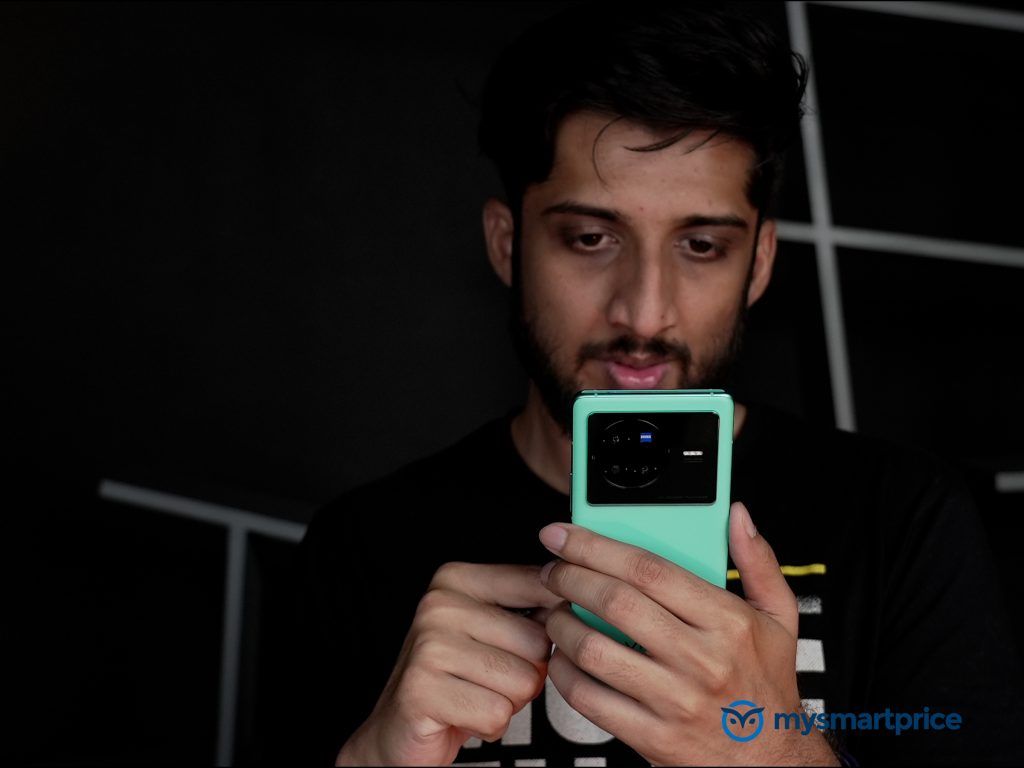
The huge camera island up top adds a lot of personality to the phone. However, I’m still not sold on the asymmetrical camera placement. The entire back is coated with an anti-matte finish which shimmers under light and honestly all I can say is that this phone looks better than any other phone I’ve used in the last couple of years. The camera island does sport a glossy finish though, making it a fingerprint magnet. Vivo has done a decent job in making sure the phone doesn’t feel as top-heavy as it looks because of the camera module, and the phone feels deceptively lightweight despite its 203 grams of weight. Most people would have no problems in using this phone single-handedly, thanks to the 8.3mm slim chassis.
Coming to the ports and buttons, there’s no headphone jack or expandable storage here. What you do get is a dual SIM slot, a USB 2.0 Type-C port and a speaker grille all at the bottom edge. The power button and volume rocker are placed at a very convenient position on the right edge and the earpiece up top doubles up as the secondary speaker.
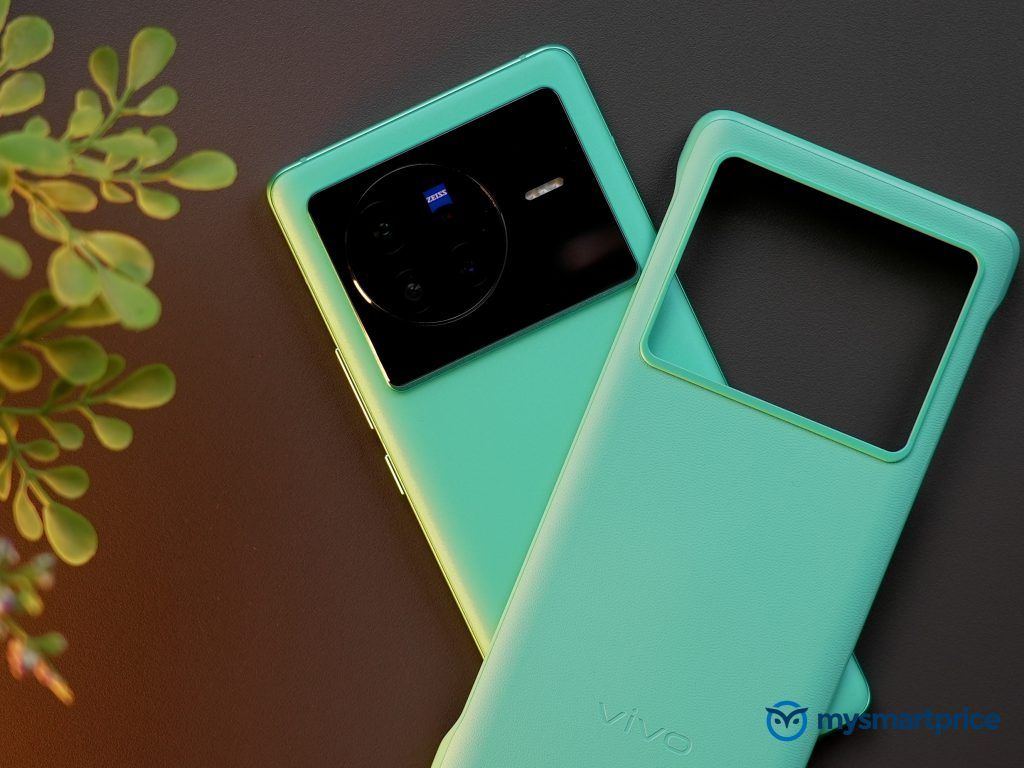
What separates this phone from all-out flagship build quality is the lack of an IP68 rating (it does come with a splash-proof IP53 rating though) and the fact that we don’t get Corning Gorilla Glass protection on either the front or the back. Thankfully, Vivo packs in a beautiful colour-matched faux leather case in the box, which does add an extra layer of protection without taking away from the looks of the X80.
Vivo X80 Review: Cameras

Next up is the piece-de-resistance of the X80 series, its cameras. The X80 debuts the 50MP 1/1.49-inch IMX866 sensor as its primary camera, which is stabilized with OIS. There are two more 12MP cameras on board, one with a 50mm 2x telephoto lens and the other with a 16mm ultrawide lens. The ultrawide comes with Autofocus capabilities so it can also double up as a macro camera. Up front is a 32MP selfie camera which is sadly still capable of shooting only 1080p 30fps selfie videos.
The still images come out nice and crisp though and selfie lovers will appreciate the face beautification features and colour filters built-in to the default camera app itself. My experience with portrait selfies wasn’t all good though, with the phone randomly failing to do HDR processing on selfies occasionally (samples above).
The rear camera performance on the X80 was a pleasant surprise. Firstly, the camera app offers a huge selection of features, filters and creative modes. So much so that I’m almost certain most average users would be overwhelmed by the options and stick to the default mode. The 50MP main camera clicks great-looking photos across lighting conditions. The HDR performance is great, the details are ample and the colours come out quite nicely. I took some comparison shots against my iPhone 13 Pro and was surprised to see the X80 able to hold its ground against what’s considered the best camera phone in the market right now.
Vivo has a Zeiss Natural colour mode built into its camera which does what it says and outputs very natural colours. Alternatively, you can turn it off and let Vivo’s AI algorithm deliver slightly boosted colours, which might be better suited for social media posting.
The 12MP ultrawide offers slightly softer pictures but the colours and HDR performance are one of the best in this segment. The same can be said for the 2x telephoto lens.
The X80 can take portrait shots from both the main camera and the telephoto lens and most of the time they come out great. The edge detection works well but under artificial light, I could notice the details coming out to be too soft occasionally. The skin tones are slightly off too, as Vivo tends to apply some beautification effects by default even if you manually turn everything off. Another thing to keep in mind is that the portrait mode shutter speed is slightly slow as I could hardly ever take a good portrait shot of my pet or my friend’s kid.
Videography was a major focus in the X80’s launch event and that is also reflected in the new video options this phone comes with. Starting with Movie LUTs which are different colour profiles that you can apply to videos to give them a more cinematic feel. Talking about cinematic, there’s an all-new Cinematic Video mode here which shoots video in the 21:9 movie aspect ratio, and also acts as a portrait mode for videos. These options only work with 1080p resolution though, and the quality of the output really depends on the scene you’re shooting. I got some great-looking results outdoors, but also terribly processed and artificial-looking results indoors.
Video recording otherwise is quite good, with the main camera capable of shooting up to 4K 60fps videos with stabilization. Vivo has finally improved the mic quality on its phones and the X80 can record stereo audio while video recording. The ultrawide camera is only restricted to 1080p 30fps video which is a bummer at this price point. Interestingly, the phone gives you the option to shoot 4K video at 2x zoom but it uses the primary camera for that. The telephoto lens seems to only be activated if you’re shooting 1080p videos.
All in all, the cameras on the X80 are quite good, with Vivo taking full advantage of its collaboration with Zeiss. A few software tweaks here and there with just a pinch of increased consistency and this could even become the best camera phone at its price point.
Vivo X80 Review: Display and Multimedia
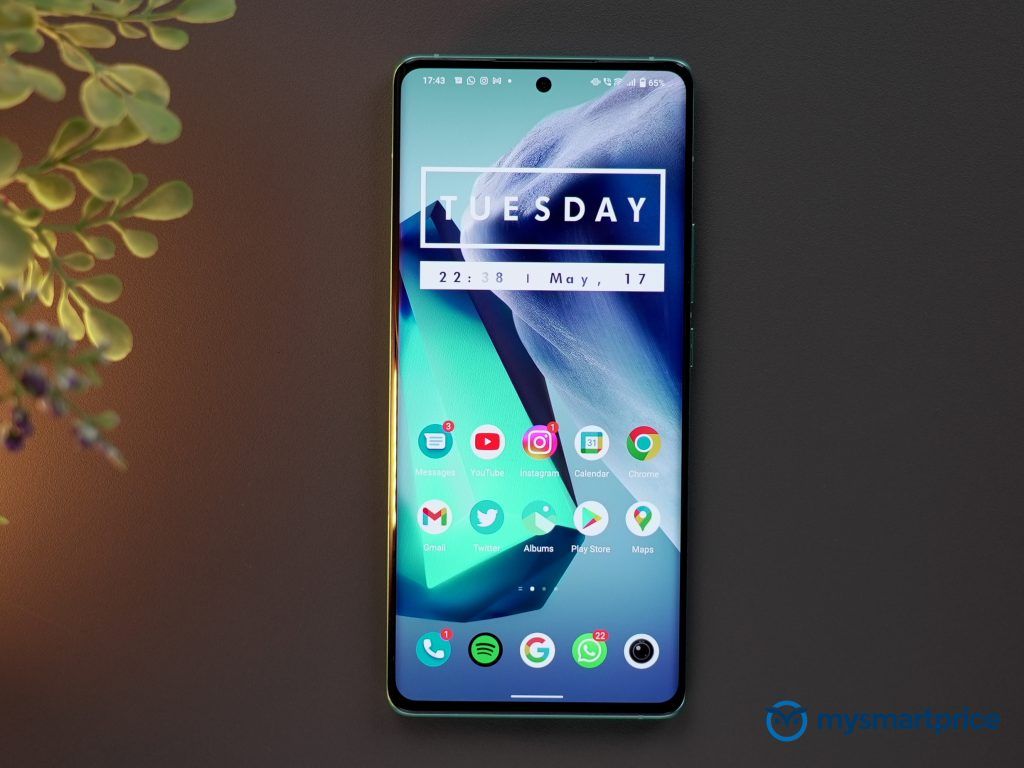
The X80 comes with a vibrant 6.78-inch AMOLED display with FHD+ resolution and a refresh rate of 120Hz. It’s not an LTPO display so it can’t dynamically adjust the refresh rate but you get to choose from either 60Hz or 120Hz refresh rate options. The display gets super bright and Vivo’s OS allows you to customize the screen colours as per your preference. The curved edges give the phone a nearly bezel-less look and in my time with the phone, I didn’t face any accidental touches in daily use, although I did notice some accidental touches with my palm resting on the edges during gaming sessions. One downside was that the auto-brightness adjustment was too iffy on my unit, and I was mostly left adjusting the screen brightness on my own every now and then.
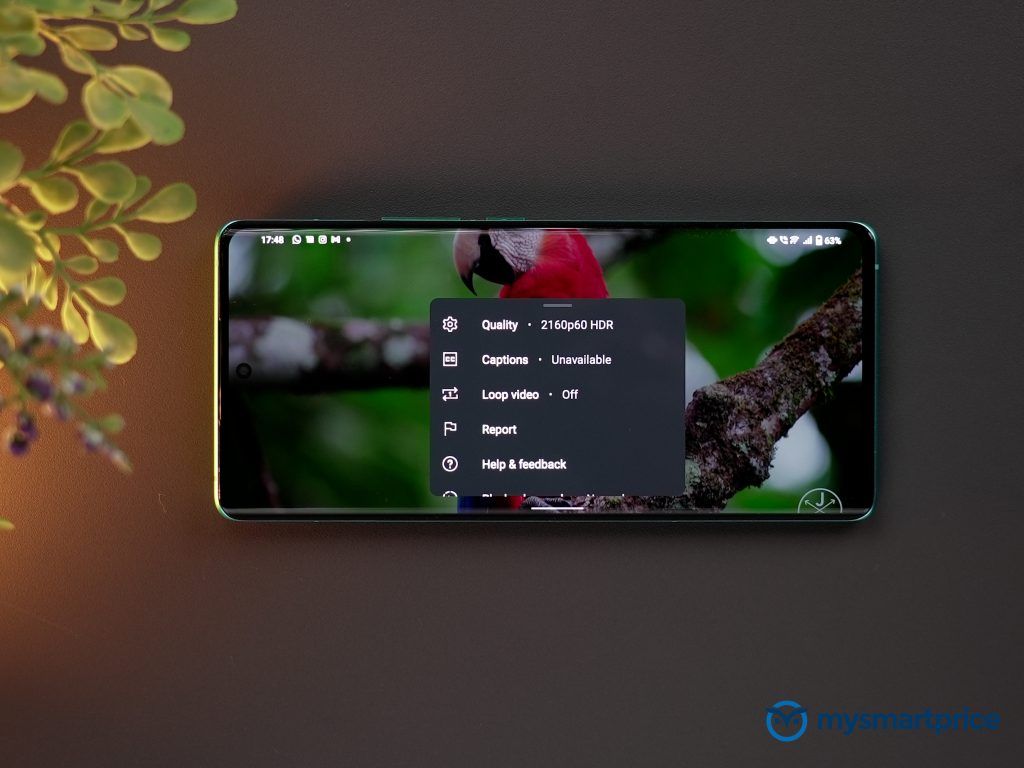
Coming to the multimedia performance though, the X80’s display has support for HDR video playback both on YouTube and streaming apps like Netflix. The brightness and colours on display are top-notch and the stereo speakers help add to the immersive experience. That being said, the speaker output is still heavily reliant on the bottom speaker, and a louder, fuller earpiece would have been welcome. One aspect where the X80 falls slightly short of the competition is the haptic feedback. It’s still a huge leap over the rattle-ey haptics of the X60 but the linear motor in the X80 still doesn’t feel as refined and tight as phones like the OnePlus 9RT and Xiaomi 12 Pro.
Lastly, the X80 comes with a regular optical in-display fingerprint scanner (unlike its Pro sibling that comes with the new huge ultrasonic scanner), which works as expected.
Vivo X80 Review: Performance

The X80 becomes the first phone in India to come equipped with MediaTek’s top-tier Dimensity 9000 chipset. It’s pretty much identical to the Snapdragon 8 Gen1 in terms of core configuration etc., with the only big difference on paper being the GPU. I did a detailed performance test of the D9000 against the SD8Gen1 and SD888 and the results were a mixed bag for now. The highest benchmark scores on the D9000 were pretty much top-of-the-table, but I noticed a lot of throttling under sustained loads. Now that could be due to the fact that the X80 series isn’t a performance-focused offering and hence Vivo has tuned the chip here more in line with casual usage needs. You can watch the full video here:
Anyway, coming to real-world usage, the phone performs flawlessly. I love the feeling of 120Hz scrolling, the app opening and closing speeds were great and I never felt like I needed more power during my usage. The slight hiccups I faced were during car rides when I was using Google Maps navigation and music playback together in the scorching Delhi summers. The X80 starts with an 8/128GB model which I reviewed, and there’s also a 12/256GB variant. Both of them come with UFS 3.1 storage and LPDDR5 RAM.
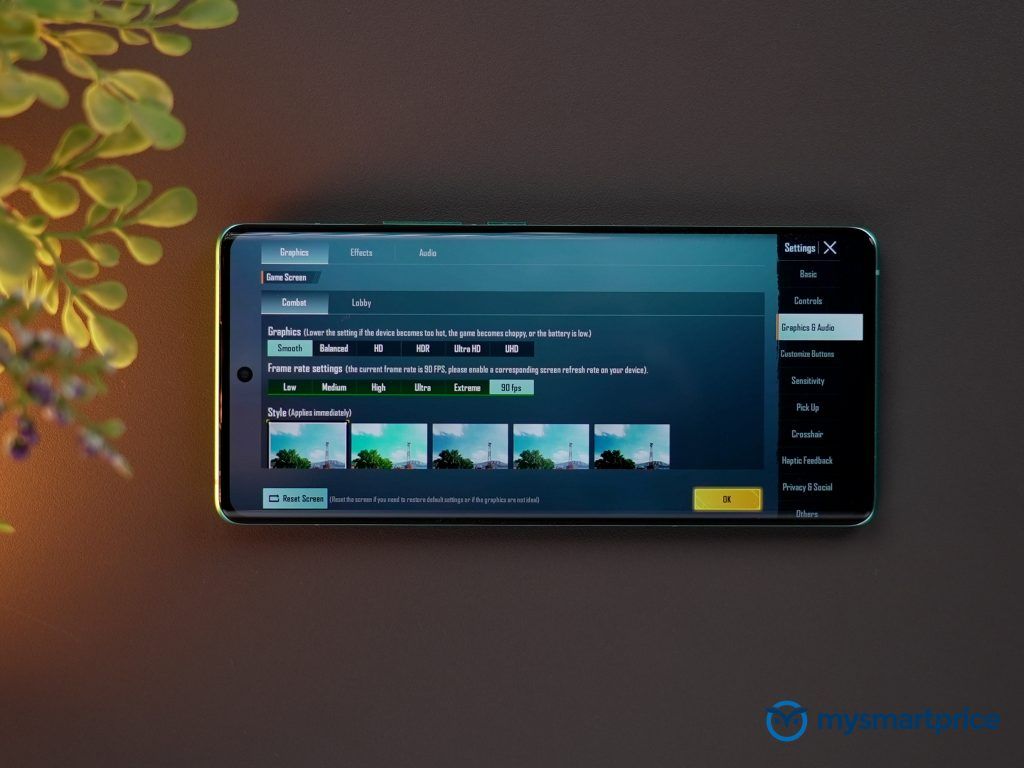
Gaming-wise, the D9000 surprised me, as it is probably the first MediaTek chipset in my memory to offer maxed-out graphics settings in games like BGMI and COD. I could run BGMI and COD at 60fps on the highest graphics quality, and BGMI even offered 90fps gameplay, albeit only at the lowest graphics preset. The gaming performance itself was quite commendable, with Vivo’s frame-rate interpolation feature making everything feel extra smooth and helping with the twitch response as well. The phone did heat up in about 45 minutes of gaming though, but that is going to be the case with every flagship this year so I can’t really complain.
Vivo X80 Review: Battery & Network
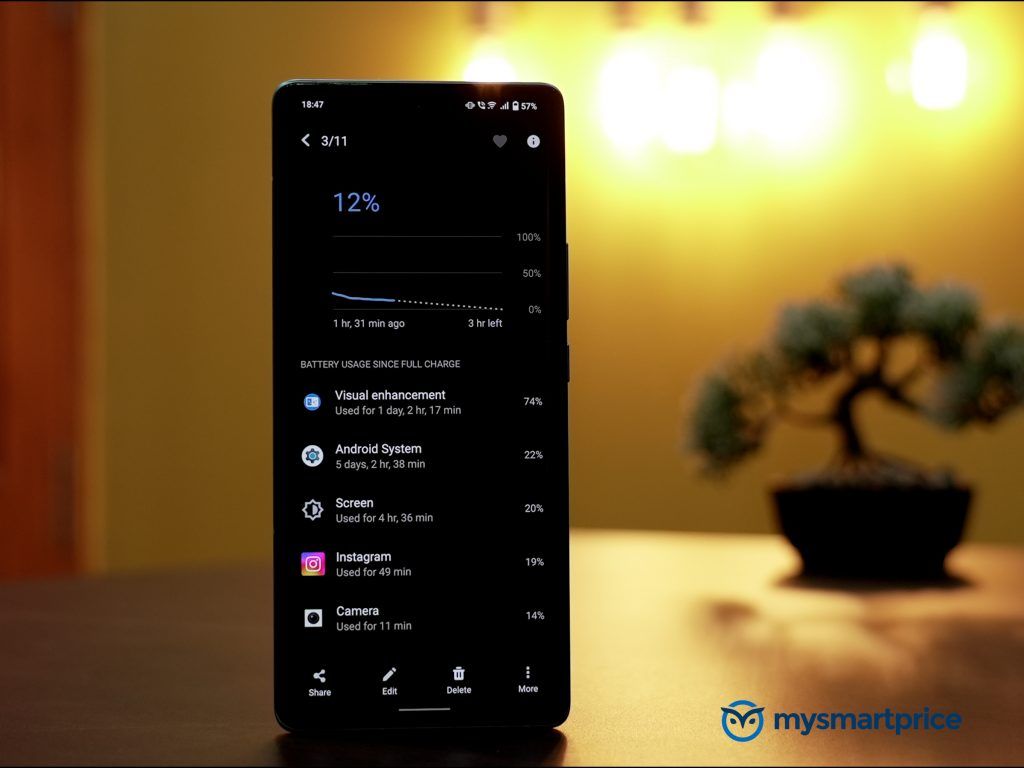
Vivo packs in a 4500mAh battery with the X80 and the battery performance is in line with what most premium Android phones can deliver in 2022. My usage was mostly social media, YouTube and a little bit of navigation, and I could get my phone to last just about 24 hours with around 5 hours of SoT by the time it dropped under 15%. The bundled 80W fast charger from Vivo takes about 40 minutes to top up the phone from 1-100% but it can hit 50% in just about 15 minutes, which is great. What sucks though, is the fact that the X80 doesn’t support any sort of USB PD charging, meaning the phone only charges at 10 watts via any other charger except its own.

Coming to the network performance, we get 10 5G bands on the X80, and support for 4G carrier aggregation. I used the phone with an Airtel SIM in Delhi-NCR and the network performance was just what you’d expect from Airtel. There were frequent call drops and patchy internet connection issues but for what it’s worth the call quality was clear whenever Airtel allowed and the earpiece performed as expected too. The phone also supports Wi-Fi 6 networks.
Vivo X80 Review: Software & UX
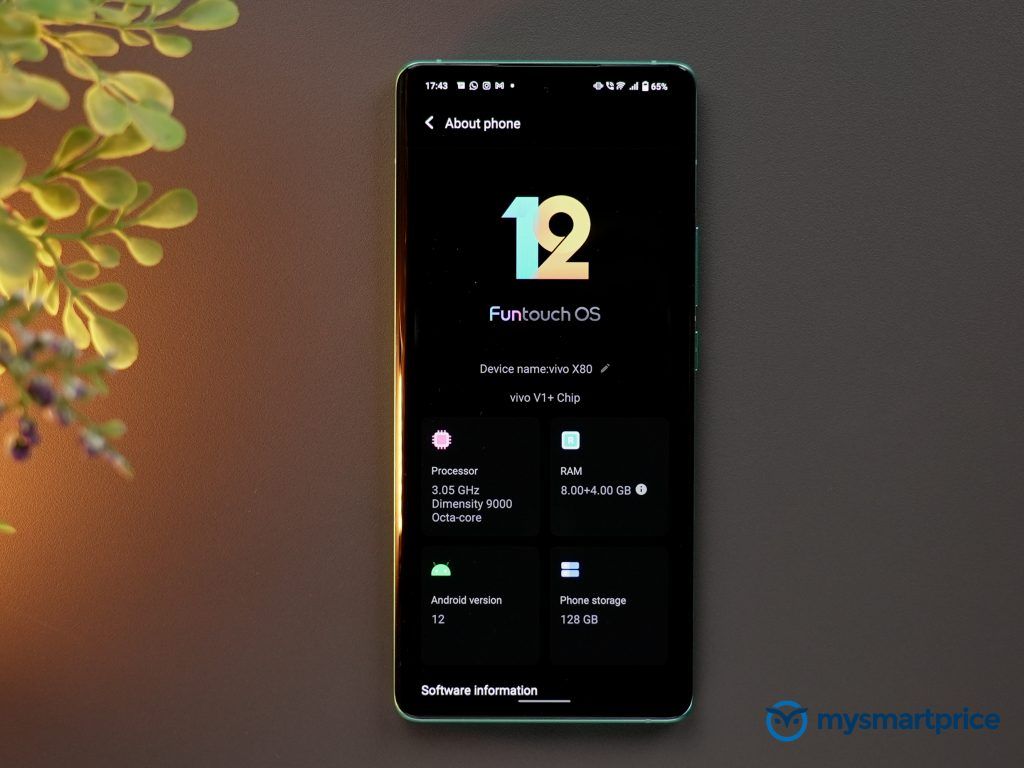
The X80’s software is probably its weakest point. Vivo has done exceptionally well in improving its custom UI skin over the last few years, but FunTouchOS 12 is still a long way away from being a flagship-grade experience. Firstly, Vivo has hardly made any visual changes in FOS12 over FOS11. Then, there’s the same old barrage of bloatware pre-installed on the phone, which you can delete by the way but I don’t get the point of pre-installing cheap apps like Moj and Takatak on a premium phone. But even worse is the fact that there are embedded advertisements in Vivo’s own browser and the global search that pops up by swiping down on the home screen. Apart from this, the animations and UI itself don’t feel as clean and fast as compared to something like OxygenOS or even ColorOS.
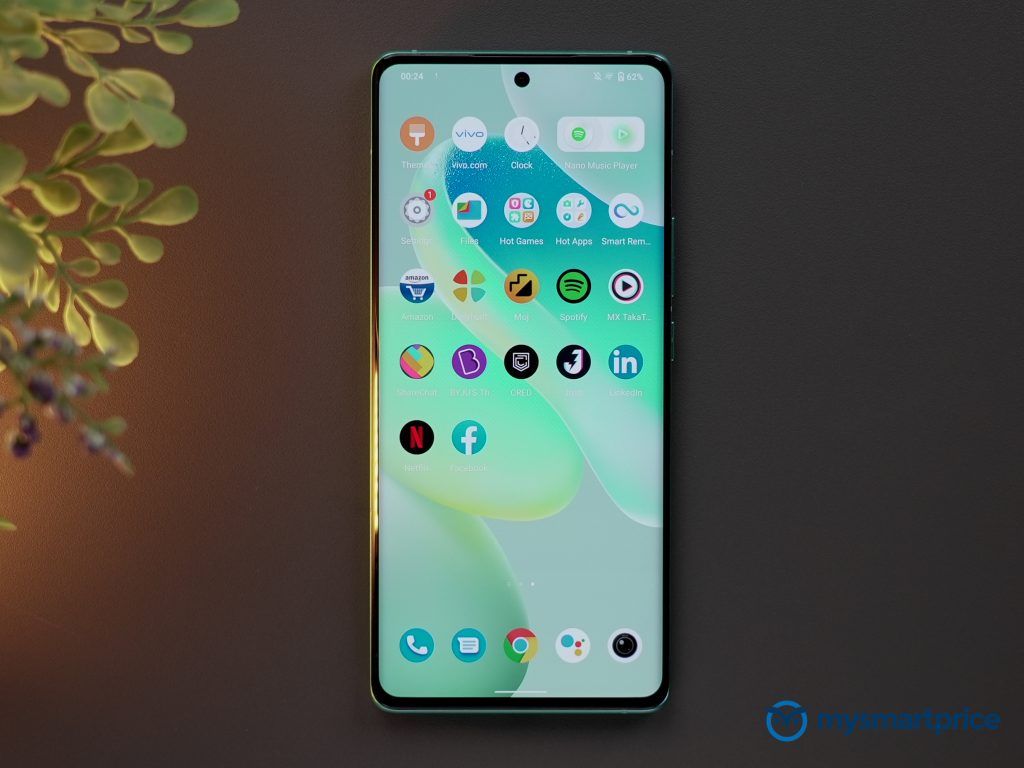
Credit where it’s due, FuntouchOS does pack in a lot of features and customization options, including all the latest privacy features and theming options of Android 12. Vivo has turned over a new leaf in terms of software support as well, becoming one of the very first brands to offer phones with Android 12. Furthermore, the X80 is also guaranteed to get updates up to Android 15, which isn’t something a lot of phones in this price segment can claim. All in all, the software experience on the Vivo X80 isn’t the best, but it’s not a deal-breaker either.
Vivo X80 Review: Conclusion & Alternatives
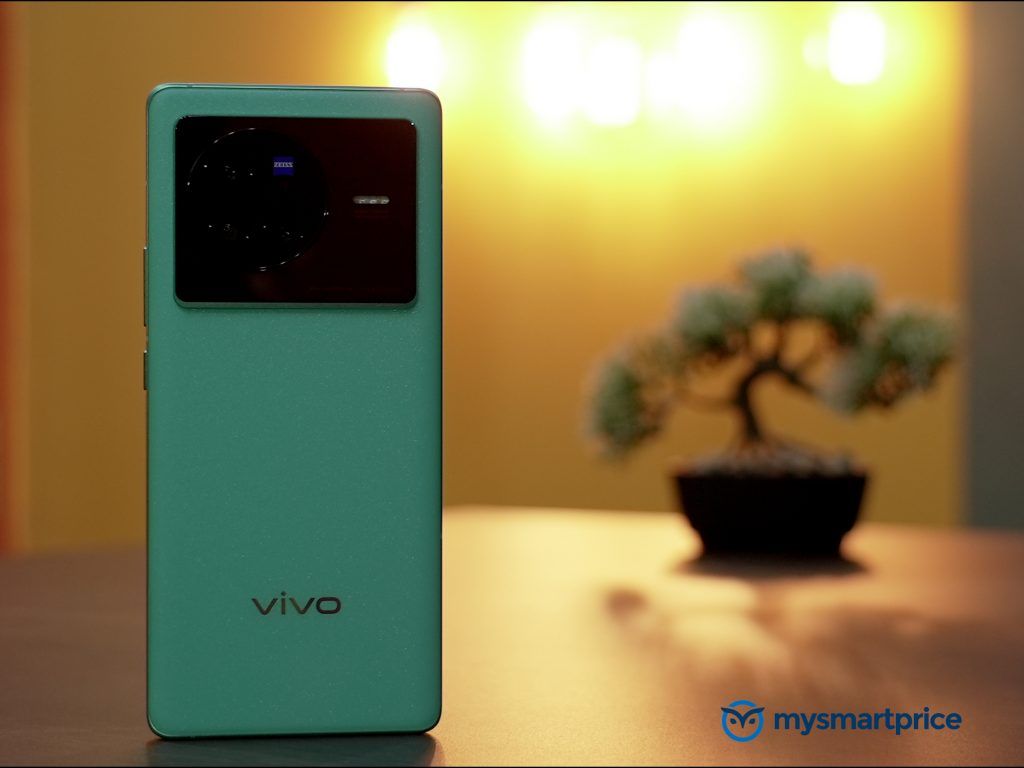
The Vivo X80 offers fast, reliable performance, decent battery life with superfast charging, can take great-looking pictures, comes loaded with a plethora of creative camera modes, and most importantly, it feels great in the hand and looks even better than that. The only major downside you need to consider before buying this phone is the software experience and some minor side effects of it. The bloatware breaks the premium experience to some extent, the camera processing could be hit-or-miss and the lack of USB-PD charging is irksome. That being said, I still think this is a great value flagship to buy for most people looking for smooth performance, versatile cameras and a phone that’s capable of making a fashion statement of its own.
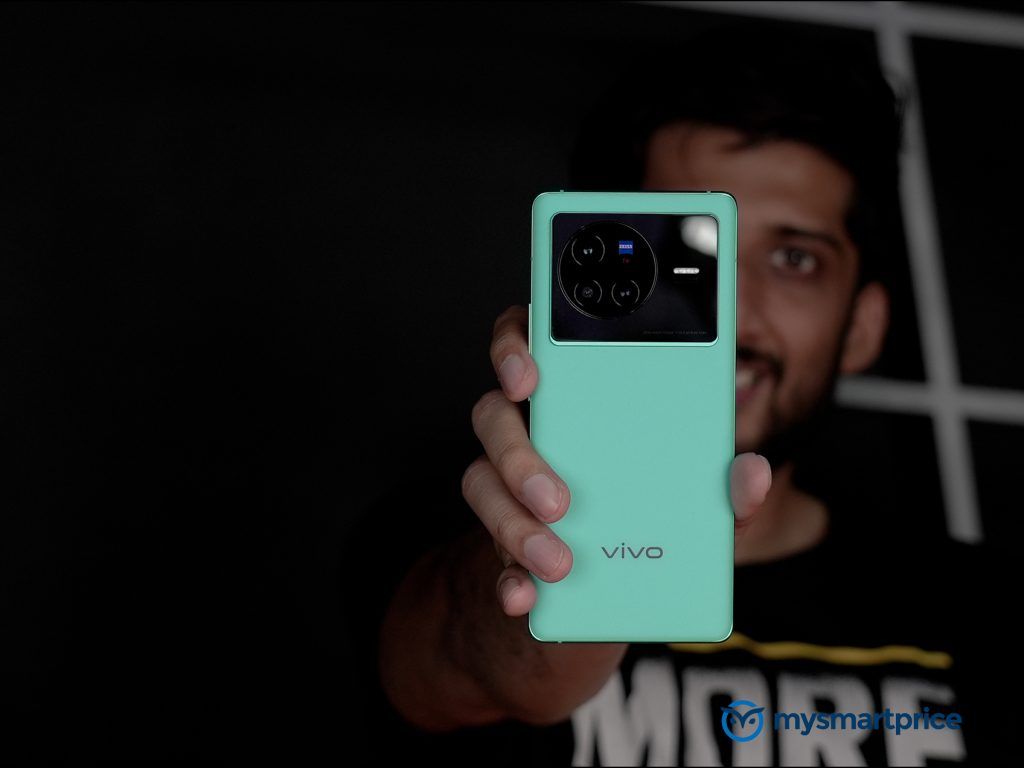
For those who just want the best performance and gaming, phones like the Realme GT2 Pro and OnePlus 9RT might be a better bet. At the X80’s asking price of Rs 54,999, its closest competitor is the Galaxy S21 FE, which offers additional features like Wireless charging, a waterproof rating and slightly more consistent cameras. Although you miss out on the in-box accessories, standout design and superfast charging of the X80. Another all-round flagship that you might want to consider is the Xiaomi 12 Pro (review here). It was priced at INR 62,999 originally but multiple discounts and cashbacks can bring its price down to under 55K.
All in all, I’m supremely impressed by the Vivo X80’s hardware, if only the software could keep up with it. Maybe next time?
